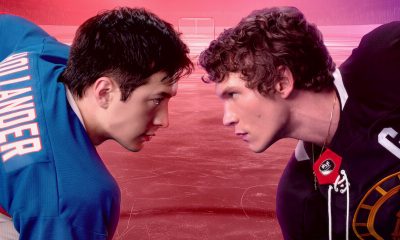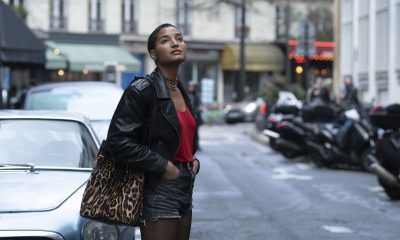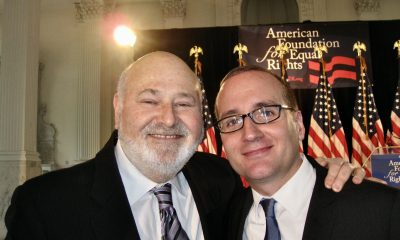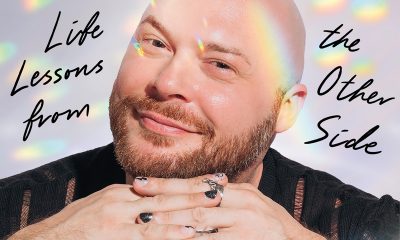a&e features
CinePride Spotlight: ‘Maxxie LaWow’ creator Anthony Hand on super-sheroes, drag icons & animated empowerment
Anthony Hand’s Maxxie LaWow reimagines the superhero narrative through the fierce lens of drag. Anthony opens up about identity, resistance, and what Maxxie would say to anti-drag politicians.
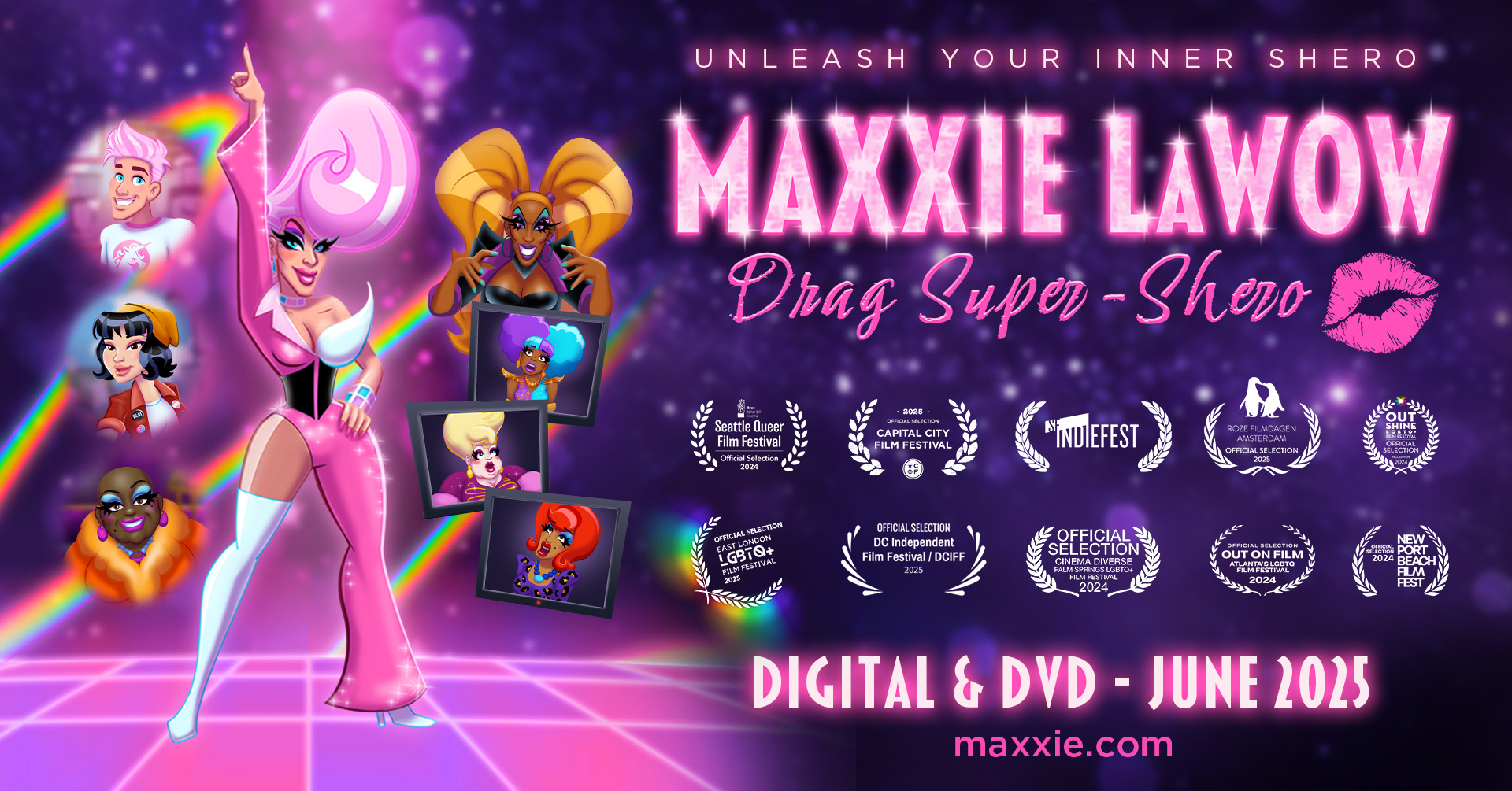
CinePride Los Angeles is rolling out the rainbow carpet for Maxxie LaWow: Drag Super-Shero, a dazzling debut where empowerment meets camp with a whole lot of sparkle. At its heart is a story about transformation, resilience, and the power of stepping fully into who you are, no matter how much padding it takes. Bold, heartfelt, and joyfully comedic, Maxxie is here to serve a purpose with a whole lot of glam.
We caught up with Anthony Hand, the creator behind Maxxie, to talk about what ignited their super-powered vision, how they utilize film to spread empowerment and solidarity, and how one drag queen’s journey might just save the world while reminding us all to embrace every aspect that makes us who we are.
Maxxie LaWow is giving us Justin Sims’s Bad Hair meets Jem and the Holograms, but with a tuck. How did you conceive this project, and what were some of your theatrical and personal influences?
Well, in 2018, after watching what was actually a really good comic book movie, I found myself asking: where are all the superheroes in the LGBTQ+ family? At that time, I wasn’t aware of any Marvel or DC films featuring LGBTQ+ superheroes. So, I started imagining—if we had a superhero like that, what would their powers be? Who would they be? What would they represent and fight for? That brainstorming journey was really fun. Ultimately, I settled on a drag queen as the perfect representative of this kind of superhero I wanted to create. I’m a huge fan of drag and RuPaul’s Drag Race. Watching queens prepare for the runway every week, you really see the transformative power of drag.
Those queens share their personal journeys and challenges, and often describe how the process of getting into drag – tucking, padding, wigs, makeup – transforms them. Even if they’re shy or reserved in daily life, stepping into drag unleashes a bold, empowered persona. Drag acts as armor against hecklers and society’s negativity, which really resonated with me. That’s why I envisioned a story where Simon transforms from mild-mannered to bold, brassy Maxxie LaWow in a fun, fluffy superhero tale.
The transformation scene is, well… Wow
That was very much inspired by a Sailor Moon style sequence.
There’s definitely a small-town boy (cue Bronski Beat) vibe to Simon’s origin story. What audience were you aiming to reach with Maxxie LaWow: Drag Super Shero?
Growing up in a small farm town in the ’80s, Bronski Beat was one of my favorite bands, so that definitely influenced me. But more broadly, LGBTQ cinema often struggles to reach audiences beyond the LGBTQ community itself. I wanted this project to be accessible not just to LGBTQ viewers but to allies as well. Drag has become hugely popular, with events like DragCon in LA, New York, and London, and with RuPaul’s Drag Race becoming a dominant reality TV show globally.
As drag becomes more accessible, it helps allies see us as real people – neighbors, friends, family – which humanizes and advances LGBTQ+ civil rights. So I wrote this story with a core appeal to the community, but also with allies in mind. In fact, my mom is a huge fan of drag, so while writing, I kept asking myself, “Will my mom find this funny?” And also, “I hope RuPaul and Michelle Visage find this funny!” Drag truly brings people together, which you can see in the popularity of drag brunches, drag bingo, and drag trivia, where many attendees are allies.
Speaking of villains, what was Diabolical’s turning point in her origin story?
Great question. For world-building, I created detailed dossiers for all main and many secondary characters. Diabolical comes from a family of fashion innovators but didn’t inherit that talent herself. There are Easter eggs in the film—like the nightclub “Skirt and Girdle,” where Simon sees drag for the first time. That used to be a factory built by Diabolical’s grandmother, and there’s a statue of her in the courtyard.
Diabolical tanked her family fortune with poor fashion decisions on the runway, but as a chemist and beauty consultant, she discovered that drag queen tears have magical anti-aging properties. Though she lacked fashion talent, her creative ambition led her to launch a new cosmetic line based on this discovery.
Now, to our protagonist, Simon goes full purple peacock cocktail on his 21st—any fun stories from your own 21st birthday?
Oh boy. I was in college at Michigan State, and back then, 18+ could still enter bars. I definitely drank far too much on my 21st birthday. There were a few other college shenanigans, but those early experiences taught me I don’t love the room spinning. So, lessons learned.
There are a few subtle details throughout the film, like Jae recycling the can instead of tossing it, Maxxie tossing someone’s cigarette in the club, and Jae encouraging Simon not to resort to liquid courage. Were these intentional?
Yes! Jae recycling reflects my personal values about not littering, and it also shows her toughness when she smashes the can on her board. The cigarette scene was inspired by family members who smoked. I was always the one rolling down the window and asking them to stop. It also gave us a fiery hoop aerial scene, which was dramatic and fun.
Regarding Jae encouraging Simon not to get more liquid courage, that was a key moment I imagined early on. Jae tells Simon, “You’re fine as you are, just go talk to him now.” That push helped Simon transform into Maxxie LaWow for the first time.
Your film is showing at Cine Pride LA, What does it mean to you to showcase Maxxie in a community-rooted festival like this?
It means so much. Being selected as the opening film for the inaugural season of the CinePride Film Festival is a huge honor for me and the entire cast and crew. Many of us live in LA, so having a hometown theatrical screening is especially meaningful. Independent films rarely get big theatrical runs anymore, so festivals like this are vital to share our stories on the big screen.
Watching movies at home is great, but nothing compares to that cinematic experience. We’re extremely grateful for the opportunity to showcase the film to friends, colleagues, managers, and casting agents here.
Regarding the current climate across the US, how do you see Maxxie, our Super-Shero, responding to the ongoing anti-drag rhetoric?
Honestly, the anti-drag rhetoric is ridiculous and baseless. Drag queens have always played a huge role in uplifting LGBTQ+ communities through fundraisers, activism, and leadership. Think about the heroes who threw their heels at the Stonewall Riots or the Compton’s Cafeteria riots a year earlier in San Francisco. Drag performers absolutely deserve our respect, gratitude, and support. It’s heartbreaking, especially with recent events like Florida paving over the rainbow sidewalk outside the Pulse nightclub. It’s hateful and completely unacceptable.
The alt-right has found a convenient scapegoat in drag performers, even though the accusations are baseless. Meanwhile, actual criminals in religious and political leadership go unchecked. Drag performers commit zero crimes; they’re about community and joy. Supporting and uplifting drag artists is crucial to fighting this hate.
What would Maxie say to lawmakers trying to legislate drag out of public spaces? Feel free to answer in character.
If I imagine Maxxie as someone like Nina West – bold, brassy, and articulate – she’d probably clap back hard, maybe with some snarky social media posts. Or like Jinkx Monsoon, who’s been sharp in calling out politicians lately. I don’t have a direct quote, but Maxxie would definitely stand strong and fight back with humor and heart.
The film features a post-credit scene. Is that a hint for a sequel or a series?
Yes! The bonus scene reveals more about the Three Demon Cats and their role beyond Diabolical’s control. It bookends the story nicely. I’d love to see Maxxie picked up for a series or web shorts, or even comic books. For now, we just need people to watch the film so we can make that happen.
What do you hope young folks, especially in small towns, take away from Maxxie’s journey from shy Simon to full-blown super-shero?
Growing up in the ’70s and ’80s, positive LGBTQ+ representation was almost nonexistent. Often, queer characters were villains or victims. Now, we have more affirming stories, but we still need heroes. Maxxie’s core message is about finding the courage to be your authentic self. It’s a fun, PG-13 film but great for drag fans of all ages. I wanted something welcoming that questioning kids and families can watch together, which is rare for LGBTQ+ films.
What’s a pluot? And was that a nod to the oh-so yummy and oh-so campy 1969 film The Gay Deceivers?
I recently watched The Gay Deceivers! It was both brilliant and horrifying. It wasn’t an intentional reference, but I love that you made the connection. The pluot represents Diabolical’s ego and pretense, maybe a nod to wealthy socialites.
What impact do you hope Maxxie LaWow will have on communities across the country, especially as rights are under threat?
Maxxie is campy, fun, and uplifting; a cozy, low-stakes film with a lot of heart. I hope it brings people together, reminds everyone that LGBTQ+ folks deserve to live freely and authentically, and engages allies in a positive way. It’s a communal experience — drag is always better with friends.
In one glitter glazed sentence, how would you describe Maxxie LaWow?
Maxxie LaWow is a bold and brassy queen who may not be the cleverest in the room but has the will and determination to do the right thing and help those in need.
CinePride runs September 11 – 14, 2025 at Landmark Theatres Sunset.
For more information, visit CinePride.org
a&e features
Indya Moore on history-making Gotham Award nomination and speaking out on social media: “It has complicated my access to work”
The Pose star also recalls first stepping into the role of Angel during Trump’s presidency
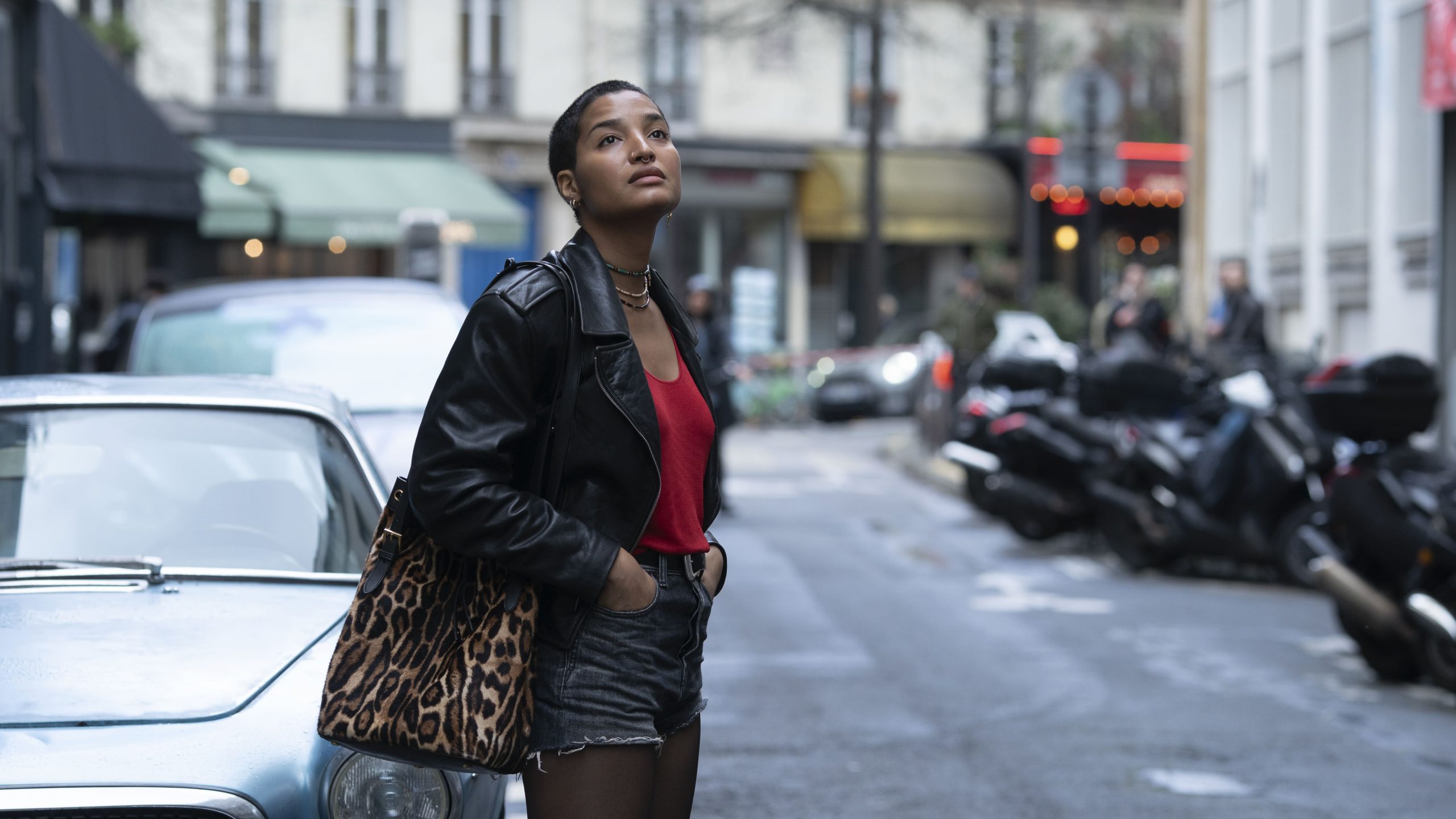
Since their breakthrough role in Ryan Murphy’s Pose, Indya Moore has been no stranger to making history both on the big screen and off it. Most recently, they became the first openly trans or non-binary actor to be nominated at the Gotham Awards in the lead or supporting categories.
“It happened because I had the opportunity,” Moore says of being recognized for their work in Jim Jarmusch’s newest indie, Father Mother Sister Brother. “It’s hard for me to receive the award of a nomination, but I really do appreciate it. It makes me feel like I’m growing in the right direction. It’s a very positive nod to keep working the way I did for this film.”
Jarmusch’s Father Mother Sister Brother, which won the top award at this year’s Venice Film Festival and is being distributed in the U.S. by MUBI (who released The Substance last year), is divided into three distinct chapters, exploring dysfunctional family dynamics. Moore appears in the last chapter, titled Sister Brother, alongside Luka Sabbat. The two play twins who reunite following the death of their parents, and must figure out how to move forward in their lives. The previous chapters feature Cate Blanchett, Adam Driver, Charlotte Rampling, Tom Waits, and Vicky Krieps.
Ahead of the film’s Christmas Eve release, Moore spoke with The Blade about working with Jarmusch for the first time on Father Mother Sister Brother, making history at the Gotham Awards, and why they remain active on social media and speak out about worldwide issues despite it complicating their “access to work.” This interview has been edited and condensed.
This film is your first with Jim Jarmusch. I’m curious how familiar you were with his work before, and how you got involved with the film?
I received an email about it, and then we spoke about it on the phone. It was really beautiful to be imagined as Skye and envisioned in the life of a character who is experiencing an aspect of being alive and being human that isn’t about persecution or hurt. I thought that was beautiful. These are the sorts of tones that I appreciate working with, the depths I always hope to find in this work. And I found that with Jim. I’m grateful it was him and that he chose me. I don’t know if it was even a choice for him because the way that he describes it is that these characters existed in his mind as me and Luka [Sabbat].
You appear after the first two chapters (titled Father and Mother), and the relationships between the characters there are much more strained and awkward, often comedically so. I love the tenderness Skye has with Billy in that final chapter. Could you speak to how the sibling relationship ties thematically into the film overall?
There is an interesting dynamic where it seems like the characters are different versions of each other — the parents and the siblings. And in each vignette, Skye is probably a mixture of all the previous siblings. And Billy is like the previous brother in a way. And also, the masking that the other characters seem to do is why the relationships all feel strained. They’re all hiding from each other, but they all love each other at the same time. They still all want to be there with each other, and it’s a really beautiful tension.
In the relationship between my character and Billy, there is more comfort in being together and seeing each other again — a gleefulness and joy that comes with being reunited. But the circumstances it happens with are overwhelmed with grief. Their relationship doesn’t seem that they’re masking. Like we see that Billy is experimenting with mushrooms, and so is Skye. The very nature of these medicines is to unmask. And so it’s a different perspective on what’s possible when people love and accept each other for who they are.
That’s really beautifully said. I don’t know if this is an explicitly queer film, but I think queer people might find unique connections with the dysfunctional family dynamics and how difficult that can be. As an openly queer person, are there ways you were able to specifically tap into some of the themes?
I think it’s very reflective of family dysfunction. Whether your kid is queer or just different in some funky, wacky way — kind of like Vicky Krieps’ character was. There’s always something about a person that others justify being cruel to and dominating, especially in sibling relationships. It’s really messed up. When we don’t learn to do that as kids with each other as siblings, we do that to each other as adults and become really oppressive people. We don’t understand other people’s autonomy and dignity, and it turns into all kinds of mistreatment and potentially persecution if you become somebody in a position of power and authority. Family is a really powerful opportunity for us to figure out who we’re going to be out in the world. We’re born to strangers, we’re born to random people, and end up having random siblings.
When you request that someone present their authentic self, you trust and believe them when they do. That should be synonymous with believing people when they tell you they’re queer, or they have a disability that they need to make boundaries around. Or if they’re a person of color, they come from a history of intergenerational trauma and persecution and genocide. How do you respond to that? Or someone else who may be part of a people who are being occupied and colonized right now. Without all these fancy political words, how do we empathize with people who are trying to survive cruelty? How do we find the wisdom and incentive to love people when you get nothing back in return for doing it? That is what the advancement and hard work actually is. In Father Mother Sister Brother, the narrative doesn’t get that deep, but it evokes that train of thought. It evokes that framework of thinking about relationships, and I appreciate the film for doing that.

This film won the Golden Lion at this year’s Venice Film Festival, and you recently made history at the Gotham Awards as the first openly trans nominee in the supporting or lead acting categories (Jack Haven was nominated for I Saw the TV Glow before they came out). What does that recognition mean to you?
Oh, well, that’s news to me. I didn’t know that I was the first trans nominee. I appreciate that acknowledgement. It happened because I had the opportunity. I don’t know how to think about it. It’s hard for me to receive the nomination, but I really do appreciate it. It makes me feel like I’m growing in the right direction. It’s a very positive nod to keep working the way I did for this film.
This year, you were also featured in Ponyboi, a great indie film that was notable for having a lead intersex character. What was your experience on that film? I wish it were getting more attention.
River Gallo is one of the most beloved people in my life. I love them so much, and I’m so proud. They wrote the film, sent it out, and got it made. That is phenomenal to me. They’re so brilliant, so loving, kind, generous, funny. Funny, oh my god! I had so much fun working with them. It was really fun to step into the complexity of my character, Charlie. She brought a meanness that does exist in some subcultures of the trans community. I loved supporting River and telling this story.
Talking about the state of the queer community and the world we’re living in, you have used social media as a real platform. Not just with what’s happening in the U.S., but Palestine and so many other issues. How do you approach using social media, especially as you’re getting more accolades and awards attention?
I know that it has complicated my access to work. It’s not incentivizing to go against the grain of this political suffocation that is taking everybody — children, women, trans and queer people, brown people, indigenous folks, and so many folks all over the world. There is an ushering in of some new world, some order that seems to be leaving behind a lot of suffering. Insurmountable suffering that we’ve never seen before. Nothing good comes out of that. Nothing good comes out of that ever. Nothing good comes out of separating people’s families. Nothing good comes out of lying to justify the exercise of power to do that. To cause suffering and terror, and then to call people who ask and demand for it to stop “terrorists.” I never imagined that we would live in a time where unarmed civilians are being called “terrorists” and are not allowed to fight against people who are hurting them, who are taking their homes and shelter and land, who are refusing to give up their only homes. Just for refusing to go homeless so that other people can have multiple homes and more wealth. What the fuck is that shit? Excuse my language. In the name of God, what are we looking at?
I stepped into the role of Angel in Pose during Donald Trump’s presidency [in 2018]. I have not had an opportunity to just be an artist who isn’t also having to take the extra step in engaging my audience that is unaffected with my audience that is. That is what my work has been. That is what I think the role of an artist is — to engage people with other people through your work. However, that instrument manifests as, be it a voice, a platform, or a creative medium. Being trans, being a person of color, and also feeling the weight of responsibility is deep work. And also being human. I have to use my platform to be a reminder of principles of how to treat each other, and also make sure that I’m maintaining that in my own life. And that’s hard. I’ve made mistakes too. When you have a platform, people romanticize you as a better version of themselves. They idolize you. So I’m constantly telling people to stop calling me a goddess. I’m not a queen. I’m a person just like you.
Truly, empathy is evolutionary, and we cannot replace it with machines. It’s not going to work, and we keep trying. And that’s why I’m trying to use my platform the best way that I can. I haven’t been as creative in my messaging; I’ve just been very direct and straight to it. I’m not even necessarily trying to be the voice for everything, but also sharing other people’s. But it’s exhausting. And now to be under the pressure of the anti-trans and anti-free speech stuff that is happening. If you don’t have a platform, you have a life. And that’s enough.
a&e features
Allison Reese’s advice? Take your comedic medicine.
Influencer, writer, comedian, and producer Allison Reese talks about the power of comedy, the news cycle, and her relationship with Kamala Harris.
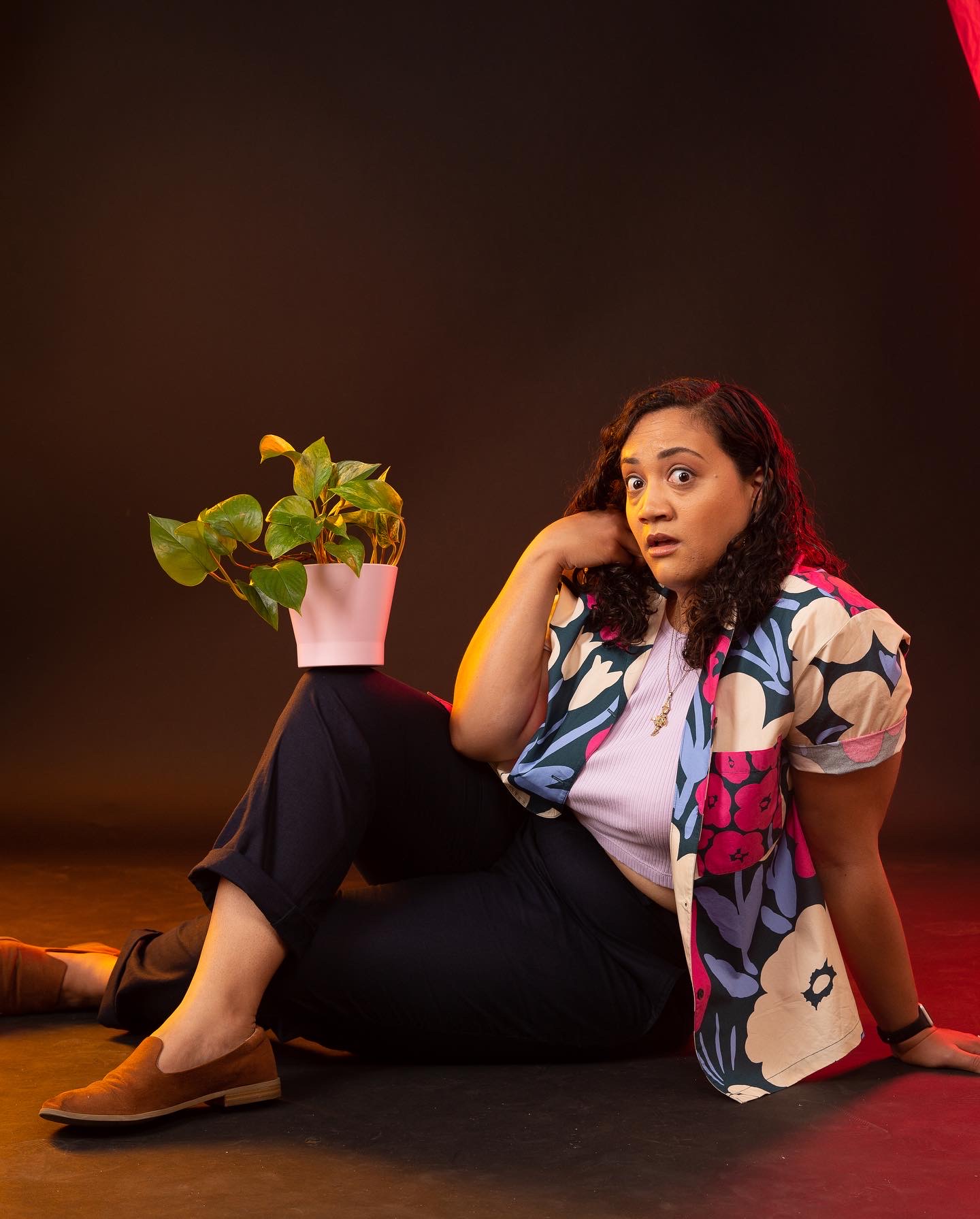
It’s often said that laughter is the best medicine. Comedian, writer, and producer Allison Reese reflects this as she has been helping her audience cope with the news cycle for years by doing various impressions of Kamala Harris on social media (which have received over 6 million likes on TikTok), through her past experiences on late-night television, and her stage appearances.
Allison has seen the positive impact of her videos and reflected on why she felt like so many people, especially those in the queer community, resonated with them. Allison shared with the Blade, “I like to think of it if I’m doing my Kamala impression, it’s like Kamala drag almost. It’s not so much just a character I do.”
Satire is something that many are using not only to digest the world around them, but it has also become a way for many to digest their news. Some people feel that the Last Week Tonight show is journalism despite John Oliver saying otherwise.
Allison stated, “As a comedian, it’s chemistry in a way. It’s like you have to have sugar to help the medicine go down, but you have to calculate how much sugar to how much medicine. Sometimes you need more medicine and a little bit of sugar. Sometimes you need a lot of sugar, because the medicine is so tough to swallow.”
While late-night shows still continue to pull in viewers, the dynamic of who people are listening to and watching is changing.
Late night is dominated by straight white men, with the exception of The Daily Show. Within the last year, late night programming has faced uncertainty with shows either being canceled or pulled off the air for a period of time.
The demand for more short-form content will continue to grow.
Allison shared, “I think the future of late night is going to be on social media. I think it’s not going to be peddled by these monolithic corporations to say, ‘Oh, you’re the right type of white guy to give me my jokey news’, you know?”
However, regardless of what the future holds, people will most likely find ways to remain optimistic when faced with tough information.
Allison understands this. Before moving to LA, she lived in New York during the middle of the pandemic and experienced the process of watching the city revive itself. “It ended up being really lovely doing stuff there as that city kind of woke up.”
One way that Allison plans on continuing to make us laugh is through releasing her new mockumentary-style web series, LGBT IDK, coming out in 2026.
Allison stated, “It follows me as I navigate the chaos of queer dating after a divorce. It’s fully improvised, and I am set up on these blind dates by my friend. And I get to date, and it’s just me with somebody who’s playing a larger-than-life comedic character.”
You can find it on her YouTube channel.
a&e features
“I should have been there”: A queer Korean adoptee finds healing with original family members
‘Between Goodbyes’ director Jota Mun talks about their filmmaking ethos behind this layered, moving portrait, now streaming on PBS.
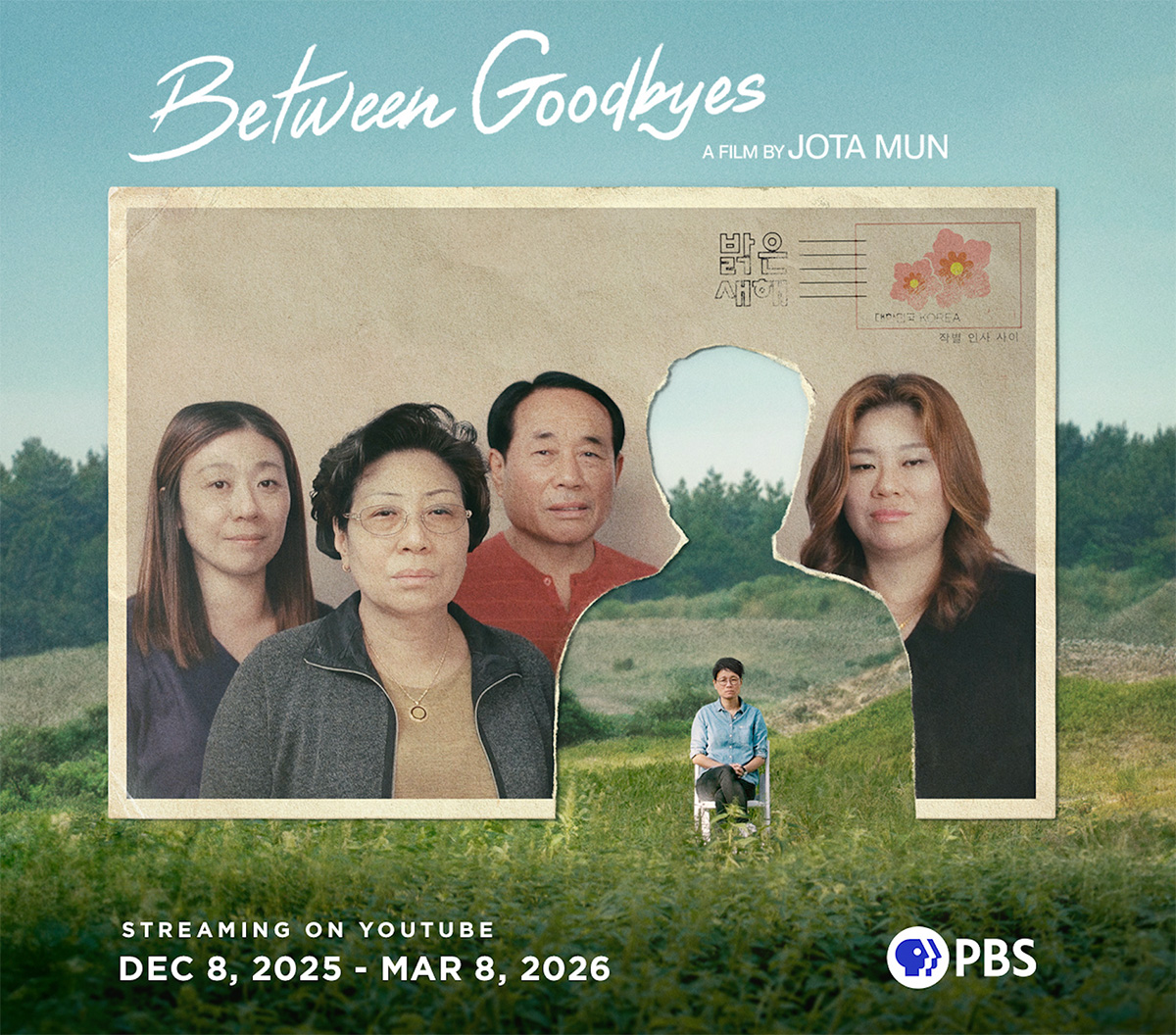
What does longing for your child look like? What happens when they resurface in front of you, when that rift was once an immeasurable open sea — a searing pain that silently hollowed you out for decades? For the child wrenched away by circumstance and thrown into the purgatory of always feeling in-between: in between home, in between being a whole person, in between who you could have been and who you are now — what does it mean to become and belong?
In filmmaker Jota Mun’s documentary Between Goodbyes, the fragmented yearning for home, family and identity are woven together into a tremendous and at times dream-like contemplation of the self, focused on various family members set adrift by a deceitful international adoption machine.
The story is focused on Mieke Murkes, a queer Korean adoptee who grew up in the rural village of Vaassen in the Netherlands. Shortly after her birth in 1982, she was raised by Willy, a devout evangelical Christian woman. But the story does not begin with Mieke in Vaassen. It begins with Okgyun, her original mother, walking through an ephemeral meadow as she makes her way to a shoreline. This is our first point of loss.
It is important to understand how the stories of Okgyun and Mieke exist. In Between Goodbyes, we see a frustrating glimpse into the cultural and political forces that created this separation. Since 1955, 200,000 children have been adopted from South Korea, and just three years ago, several of these adoptees found that their documents had been falsified. Murkes would sift through her own papers in Between Goodbyes, noting their dull and rote descriptions of her physical appearance and health. “The paperwork is as if you’re buying a new car,” Murkes says.
Written nearby: “Both parents are unknown,” a falsehood that leaves the family breathless. It is a gut punch.
This March, a South Korean governmental agency admitted that it had violated the rights of adoptees, but an investigation that began in 2022 at the behest of over 350 Korean adoptees has been halted. Whether or not retribution can ever be paid is up in the air, but the reeling grief and complicated self-reckoning many of these adoptees and their families face are rendered and expressed with deep tenderness in Mun’s documentary. “I did not know how to fit the Korean part of me in there,” Murkes said.
When Okgyun was pregnant with Mieke, she was also raising three other daughters: Mijin, Mikyung and Taekyung. The population was booming, and mothers like herself were being shamed for continuing to have children. Considering abortion, Okgyun recounts a midwife who convinced her not to go through with it — that if the child were a boy, she should keep him. If it turned out to be a girl, she could give her away to live “a good life” in the U.S. “Men are always positioned above women,” Okgyun said. “I always hated that.”
After Mieke was born, Okgyun’s mother-in-law told her to give her away. “She was gone before I saw her face,” Okgyun said. “I let her go.” Her guilt tightens her throat, trembles in her voice. “I dreamed of Mieke a lot. I can’t tell you how many times,” Okgyun said. “Dreaming and forgetting, dreaming and forgetting. The thought that kept me going is that one day I can find Mieke.”
What ensued was a several years-long search. Kwangho, Mieke’s original father, pleaded with an adoption agency for any leads about Mieke. They denied him several times and his desperation only grew. “I had to find her to be at peace before I die,” he said.
Meanwhile, Mieke’s own grief and confusion were compounding. When she was beginning to discover her queerness, she was deeply ingrained in local religious spaces. What made her feel free, the church treated as an aberration — as behavior that resulted from loss.
When she would eventually meet her original family, they, too, had trouble processing her queer identity and masculine presentation. To them, queerness was “acquired” from being raised in a foreign land. With time, they grew to embrace Mieke and her partner, Marit, even as misunderstandings arose. Of this, Mieke’s conflictedness is explored. Gay rights are more advanced and accepted in the Netherlands than in South Korea, but this does not mean contending with her queerness would have been easy with her adoptive mother, Willy. “It probably would have disappointed her a lot,” Mieke tearfully revealed.
Mieke’s stepping in between knowing and unknowing is reminiscent of Okgyun’s dreaming and forgetting — their grief and confusion move within them, replicating themselves over and over again. Between Goodbyes dives deeply into this in order to offer a portrait of healing: of its complications and the necessity of community support to achieve this.
Mun discusses the film with the Blade, diving into how reunification between adoptees and original family members is, in many ways, made nearly impossible by factors like language and cultural barriers enforced and held tightly in place by the international adoption system. This film illustrates a break in this narrative and the mighty efforts behind it all.
A broadcast version of Between Goodbyes is now available to stream on PBS. See below for more information.
Can you tell me about the inception of making Between Goodbyes? Have you always wanted to tell a story about international Korean adoption from a queer perspective?
As a queer Korean adoptee myself, [there are] so many intersections that I haven’t quite seen on screen before. So I was always really excited about making something about my community. And then I’d say, in 2017, is around when I started getting closer to zeroing in on the idea. I think part of it was through befriending Mieke and hearing her parents’ story. Hearing about their efforts really blew my mind.
So much of the standard narrative is that adoptees initiate the search. So even before meeting [Okgyun and Kwangho], it just felt like it spoke so loudly of not only their character, but a piece of the puzzle that I had never considered — that they could be longing for us. And I think as an adoptee, you always wonder what [your original parents] would think. So it’s very noticeable that we almost don’t ever hear from them directly. Even in narrative stories of adoption, they’re usually deleted, or they’re written in a really flat way that feels like they’re serving the plot. I’ve never seen a depiction of birth mothers in particular who are questioning their own circumstances or feel angry about it.
There’s a lot of nuance given to all of the different people that we see in the story. The pain is layered and deep, and we don’t just view it from one perspective. What was it like having to portray this hurt, when many adoption stories typically focus solely on the adoptee’s emotional and personal journey?
It’s so unique through each lens, even though it’s the same pain. Like her sisters — of course, it’s going to affect them. Even if she never said anything, they must have felt it. It just ripples out to everyone and keeps expanding.
Originally, it was focused on Mieke, because that’s who I had the most access to, and she’s the closest to me in terms of general identity markers. So in my mind, I felt more confident that I could tell her story in a nuanced way. But what about Okgyun? I was hitting a similar barrier of communication that Mieke had hit. That’s part of why our main producer, Zoe Sua Cho, was so essential in conveying more about Okygun and the original family’s side of the story.
When I was in the early stages of developing the film, there was a quote that I felt was really inspirational: “In our hurting, we did not realize that we were stolen from each other” (by SN Désirée Cha from Outsiders Within Writing on Transracial Adoption). The same quote came back to me in the edit and helped us find a narrative structure that went beyond just one person’s perspective.
What if the main character is the collective trauma, a singular event that causes the family to splinter and suffer across decades? I wanted to explore how tempting it is in these moments of righteous anger at systemic problems to end up fighting with each other. I feel like they both had to mourn something that was so much bigger than any one family. Mieke’s adoption affected so many people that I almost wanted that to be the main character. How do we not get lost in that pain and still try to come back together? It’s too much to carry alone.
So the main character is not necessarily one person, but the issue that you’re trying to tackle throughout the story. It also makes me think about how the documentary itself, or the making of it, also participates in this community healing that I feel like was the focus of Between Goodbyes.
I hope it’s an important layer. Suffice to say I think I always deflect to name a singular main character. I wanted to show everyone’s point of view while of course highlighting especially Okgyun and Mieke.
What else can you share about your approach to filmmaking?
You know, I was on this wonderful panel earlier this year, hosted by A-DOC, and I kind of surprised myself in preparing for it. I realized, actually, I have a lot of strong beliefs on filmmaking ethics that I hope come through in the film. For example, I reject the genius artist myth. The fantasy that if an artist is talented enough, they get permission to treat everyone around them terribly. That exploitation and squeezing things out of people is the best way to make great art.
Instead, I want to believe that the sensitivity, the care, and emotional work I poured in is going to come shining through in the film. And I do think that’s part of why we witnessed so many intensely vulnerable moments that I couldn’t have predicted.
This emotional connection to the film is also, visually, represented in artistic and inventive ways. There are sequences interspersed throughout that feel dream-like and cinematic. Creatively, what was it like to structure and craft how you wanted those scenes to be, the weight that they carried, and why you wanted to represent them in that way?
Aw, thanks for saying so! I was clear from the beginning that I wanted certain moments in the film to look as cinematic and epically life-changing as they feel in real life. Because visually, sometimes these moments of heartbreak can look rather dull. The deep heartbreak of a farewell at the airport. What does it look like? It looks like two people hugging in a very normal-looking terminal. But that’s not what it feels like. It feels larger than life. So to me, every single one of the art [scenes] has a very literal symbolism in my mind.
I really enjoy the complexity given to the family, both through the artistic symbolism and through the different angles we get to view them in. When it comes to Mieke’s queer identity, there are varying levels of acceptance and also tension that co-exist. One of her sisters, Mikyung, skirts around terms and labels, instead saying Mieke is “like that,” and “I don’t know anyone like that.” There was this feeling that queerness is learned or acquired elsewhere — that Mieke “wouldn’t have turned out like that” if she had grown up with her original family in Korea.
I can’t be sure what they were implying but you know, I definitely didn’t want to fall into a common trope of seeing Western values as being so liberal and accepting and framing all other cultures as homophobic. I want to be clear that there is a queer community in Seoul. It’s not the same as Amsterdam, of course, but it does exist.
That’s part of why it was important for me to include Mieke mentioned what she thinks her Dutch mom would have thought — just to clarify that homophobes are everywhere. There are plenty of them here in the West as well. Mieke’s Dutch parents were Evangelist Christians. So it’s not like everyone in the West is free to be a lesbian, you know?
Another moment that struck me in the film was a moment where we, as the audience, get to see you clearly. In this scene, we see you and Mieke on a rooftop, and you’re consoling her as she’s trying to prepare for a difficult conversation with her original mother, Okgyun. Did you have to find a balance in terms of being the director of this film and being Mieke’s friend?
It was really important to me to show friendship and how much that can help you along the journey. You think that for her to emotionally process things, it would have to be with her mom. But that rooftop conversation felt so transformative in itself. And then what ended up being the kind of mirror scene to that was Okgyun talking to Ruth [a fellow original mother]. She needed a buddy, too. How many times in life are we like: The opposing party doesn’t need to get it, but if my friend just could — that would give me so much relief and patience to enter the actual conversation with the person I’m upset with.
Being so personally close to Mieke and her family meant that my film was about all people I loved and cared about. I think the documentary field comes from such a long history of an anthropological approach. It’s like, “I’ve helicoptered in, and I just met you, but I’m the expert artist.” I wish the ethos were the opposite; we need to care about everyone, from the participants to the crew. I don’t want the blood, sweat, and tears to come through on the screen. I hope that watching it makes people feel cloaked in tenderness and care.
I was so worried about everyone, probably too much. It’s such a weird thing to ask people to do, to be in a film, so I took that with a lot of responsibility. Be aware of the impact you’re having. I am having an effect on this family’s life. I almost wanted to be like: “Forget my art project.” This is about the rest of their lives as a family, and that’s more important. So it became a light on my path, trying to make decisions as best I could to have a positive impact on their relationship.
It almost made me question my ethics in a different direction. “Am I intervening too much?” And that’s a strange thing: I have to admit I exist. I’m not a fly on the wall. And I think that’s why the conversation on the roof was really the most vulnerable for me, because I was showing myself. I’ve actually been here the whole time, cheering them on or trying to diffuse tension. I set out to make a film about how hard it is to stay in reunion, but now I’ve realized I’ll be heartbroken if their reunion doesn’t last. So in many ways the film was really just a vehicle for my attempt at keeping us all connected across so many distances, and that’s my own emotional journey or connection to their story.
Mun plans to release the full-length film in 2026, along with deleted scenes and additional footage. Up-to-date information can be found on the film’s Instagram page.
Kristie Song is a California Local News Fellow placed with the Los Angeles Blade. The California Local News Fellowship is a state-funded initiative to support and strengthen local news reporting. Learn more about it at fellowships.journalism.berkeley.edu/cafellows.
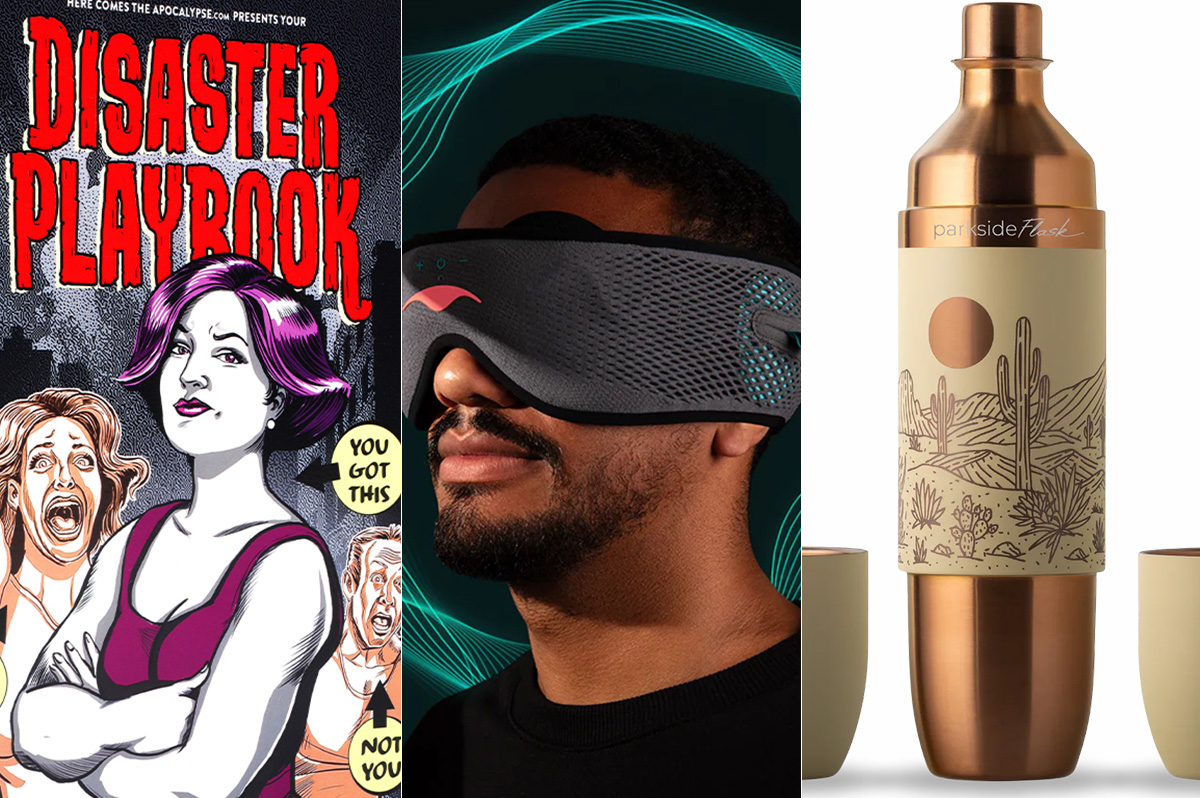
Some gifts scream practical, others whisper luxury, and a few flat-out blur the lines. From cocoa that feels ceremonial to a cologne that linger like a suggestive smirk, this year’s ultimate gift picks prove that thoughtful (and occasionally naughty) presents don’t have to be prosaic. Welcome to your holiday cheat sheet for festive tangibles that get noticed, remembered, and maybe even result in a peck of gratitude planted under the mistletoe. Consensually, of course.
Amber Glass Champagne Flutes
Pop the champs – but make it vintage. These tulip-shaped stunners in amber-tinted glass bring all the Gatsby vibes without the Jazz-age drama. Whether you’re toasting a milestone or celebrating a Tuesday, their seven-ounce capacities and hand-wash-only care make ‘em as practical as they are pretty. Pair with a thoughtful bottle of bubs and gift with a glittering wink. $18, NantucketLooms.com
Disaster Playbook by Here Comes the Apocalypse
Because the end of the world shouldn’t be a solo act, this spiral-bound guide is your step-by-step roadmap to surviving and thriving when everything else goes sideways, which might be sooner than you think. Packed with checklists, drills, and a healthy dose of humor, it’s like a survival manual written by your most prepared (and slightly snarky) friend. Whether you’re prepping for a zombie apocalypse or, more realistically, REVOLUTION!, this playbook’s got your back. $40, HereComesTheApocalypse.com
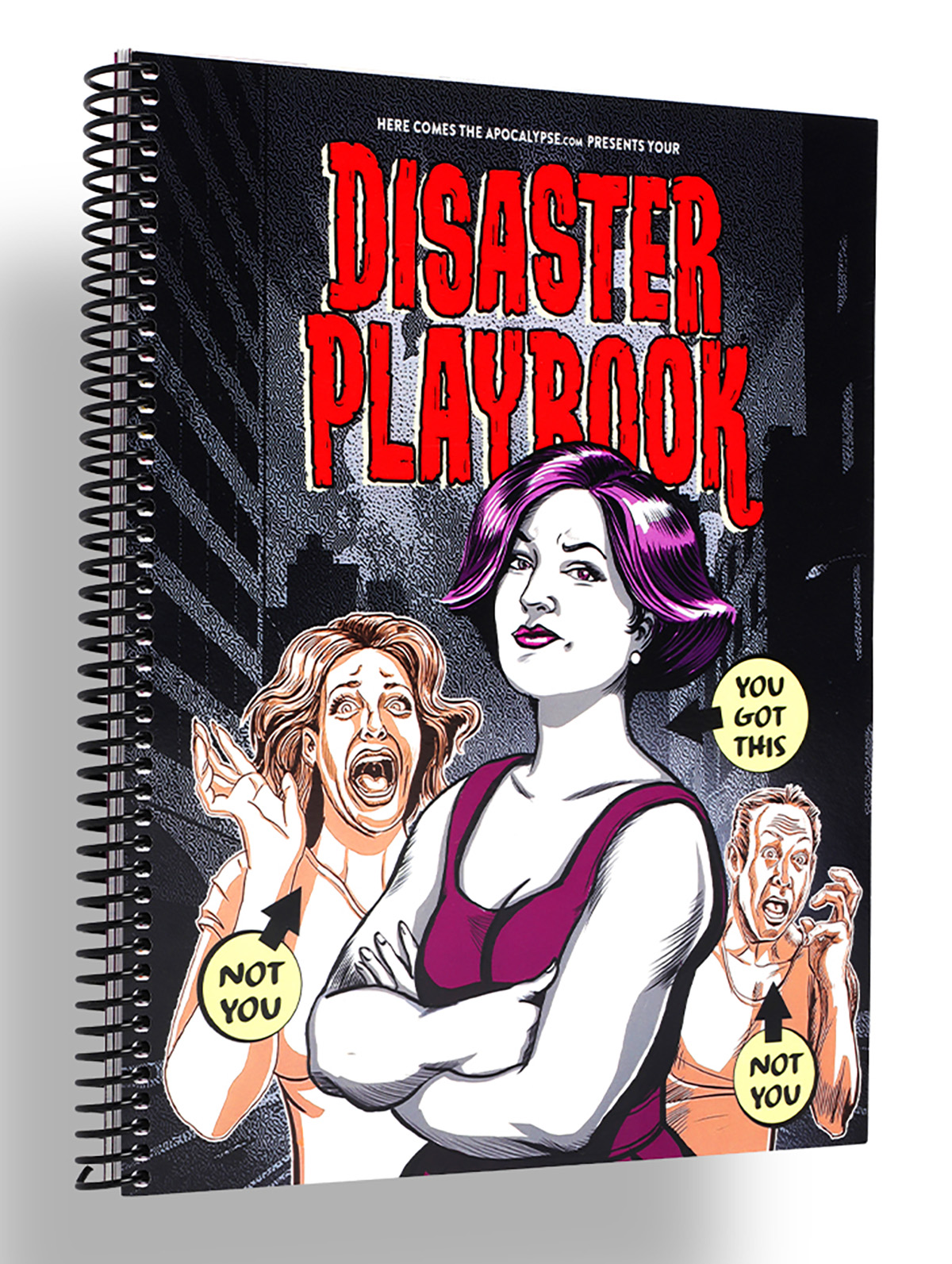
Wickless Vulva Candles
Bold, luxurious, and completely flame-free, CTOAN’s wickless candles melt from beneath on a warmer, releasing subtle, sophisticated fragrances, like sandalwood or lavender. The vulva-shaped wax adds a playful, provocative element to any space –perfect for a bedroom, living room, or anywhere you want elegance with an edge. A gift that celebrates form, intimacy and self-expression, no fire required. $39, CTOANCO.com
Villeroy & Boch Royal Classic Christmas Collection
Every meal is a mini celebration – with whimsy at every place setting – in Villeroy & Boch’s Royal Classic festive dinnerware collection that hits all the right notes. Made from premium German porcelain, it features nostalgic little toys, nutcrackers, and rocking horses in delicate relief, giving your holiday spread a playful but refined twist. Dishwasher- and microwave-safe, it’s luxe without the fuss. Gift a piece to a special someone, or start a collection they’ll use (and show off) for years to come. $22-$363, Villeroy-Boch.com
Greenworks Electric Lawnmower
You a ’hood queen who considers lawn care performance art – or just wants to rule the cul-de-sac in quiet, emission-free glory? Greenworks’ zero-turn electric mower has the muscle of a 24-horsepower gas engine but none of the fumes, drama or maintenance. Six 60V batteries and a 42-inch deck mean you can mow up to two-and-a-half acres on a single charge – then plug in, recharge, and ride again. It’s whisper-quiet, slope-ready, and smooth enough to make you wonder why you ever pushed anything besides your queer agenda. The perfect gift for the homeowner who loves sustainability, symmetry, and showing off their freshly striped yard like that fresh fade you get on Fridays. $5,000, GreenworksTools.com
Molekule Air Purifier
For the friend who treats their space like a sanctuary (or just can’t stand sneezes), the Molekule Air Pro is magic in motion. Covering up to 1,000 square feet, it doesn’t just capture allergens, VOCs, and smoke – it destroys them, leaving your air feeling luxury-clean. FDA-cleared as a Class II medical device, it’s serious science disguised as modern design. Gift it to your city-dwelling, pet-loving, candle-burning friend who likes their living room as pristine as their Instagram feed. $1,015, Molekule.com
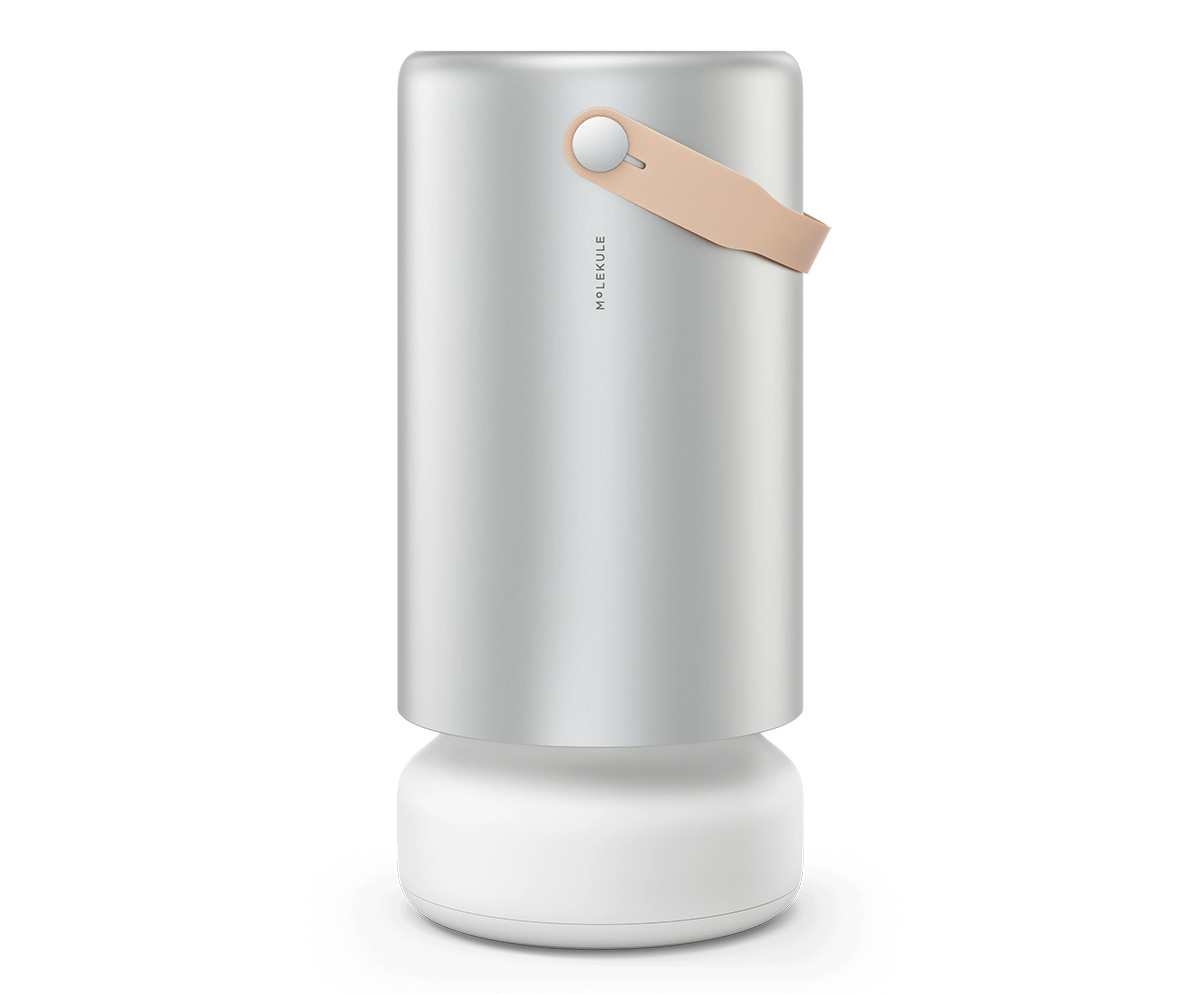
Cipriani Prosecco Gift Set
Effervescent with stone-fruit sweetness and a touch of Italian flair, the Cipriani Bellini & Prosecco gift set brings brunch-level glamour to any day of the week. The Bellini blends rich white-peach purée with sparkling wine, while the dry ’secco keeps things crisp and celebratory. Pop a bottle, pour a flute, and suddenly winter weeknights feel like a party – even with your pants off. $36, TotalWine.com
Woo(e)d Cologne
British GQ recently crowned Woo(e)d by ALTAIA the “Best Date Night Fragrance,” and honestly, they nailed it. Confident without being cocky – smoky gaïac and Atlas cedarwood grounds the room while supple leather and spicy cardamom do all the flirting – it’s a scent that lingers like good conversation and soft candlelight. Gift it to the one who always turns heads – or keep it for yourself and let them come to (and then on) you. $255, BeautyHabit.com
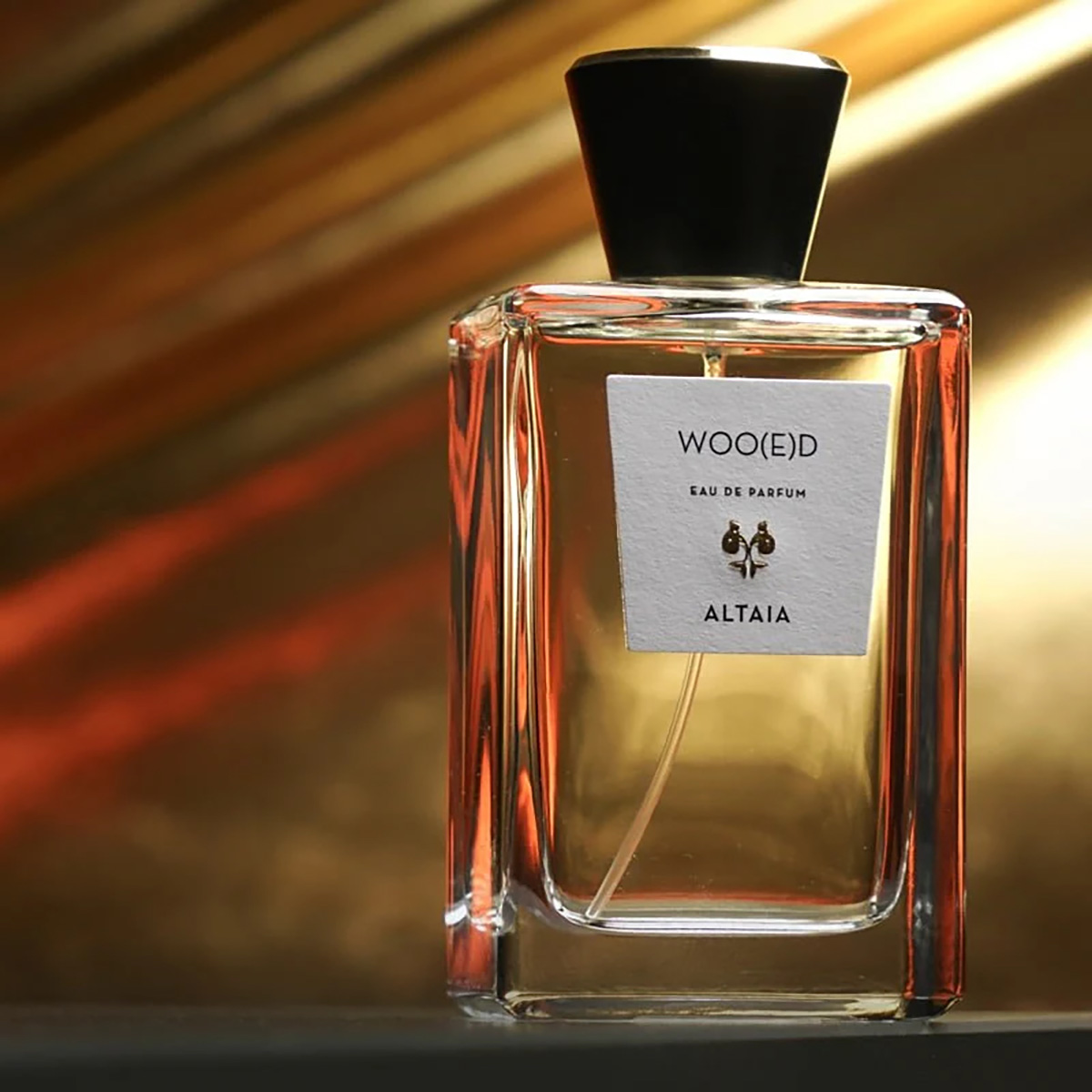
Lococo Cocoa Kit
Keep the run-of-the-mill mugs in the cabinet this Christmas and pull out Lococo’s handcrafted Oaxacan versions that demand you slow down and sip like it matters. Paired with a wooden scoop, rechargeable frother, and Lococo’s signature spice hot-chocolate blend (vegan, gluten-free, with adaptogenic mushrooms), this holiday kit turns Mexi-cocoa into a mini ritual you’ll look forward to. Perfect for anyone who loves a little indulgence with a side of ¡A huevo! energy.
Manta Sleep Mask
Total blackout, zero pressure on the eyes, and Bluetooth speakers built right into the straps, this ain’t your mama’s sleep mask — but it could be. The Manta SOUND sleep mask features C-shaped eye cups that block every hint of light while ultra-thin speakers deliver your favorite white noise, meditation, or late-night playlist straight to your ears. With 24-hour battery life, breathable fabric, and easy-to-adjust sound, it turns any bed (or airplane seat)

Shacklelock Necklace
Turn the industrial-chic vibe of a shackle into a sleek statement. Mi Tesoro’s platinum-plated stainless-steel necklace sits on an 18-inch wheat chain, featuring a shackle-style latch pendant that’s waterproof, tarnish-free, and totally fuss-les. Beyond style, it nods to a classic gesture in the queer leather community: replacing a traditional Master lock with something elegant to quietly signal belonging to someone special. Wear it solo for a minimalist edge or layer it like you mean it; either way this piece locks in both your look and your intentions. $90, MiTesoroJewelry.com
Parkside Flask Mojave Edition
Wine nights get a desert glow-up with Parkside’s limited-edition 750-milliliter all-in-one flask draped in sun-washed bronze and badland hues like sage, sand, and terracotta – with magnetic stemless tumblers that snap on for effortless shareability. It keeps your vino chilled for 24 hours, pours without drips (no tears for spilled rosé, please), and even let
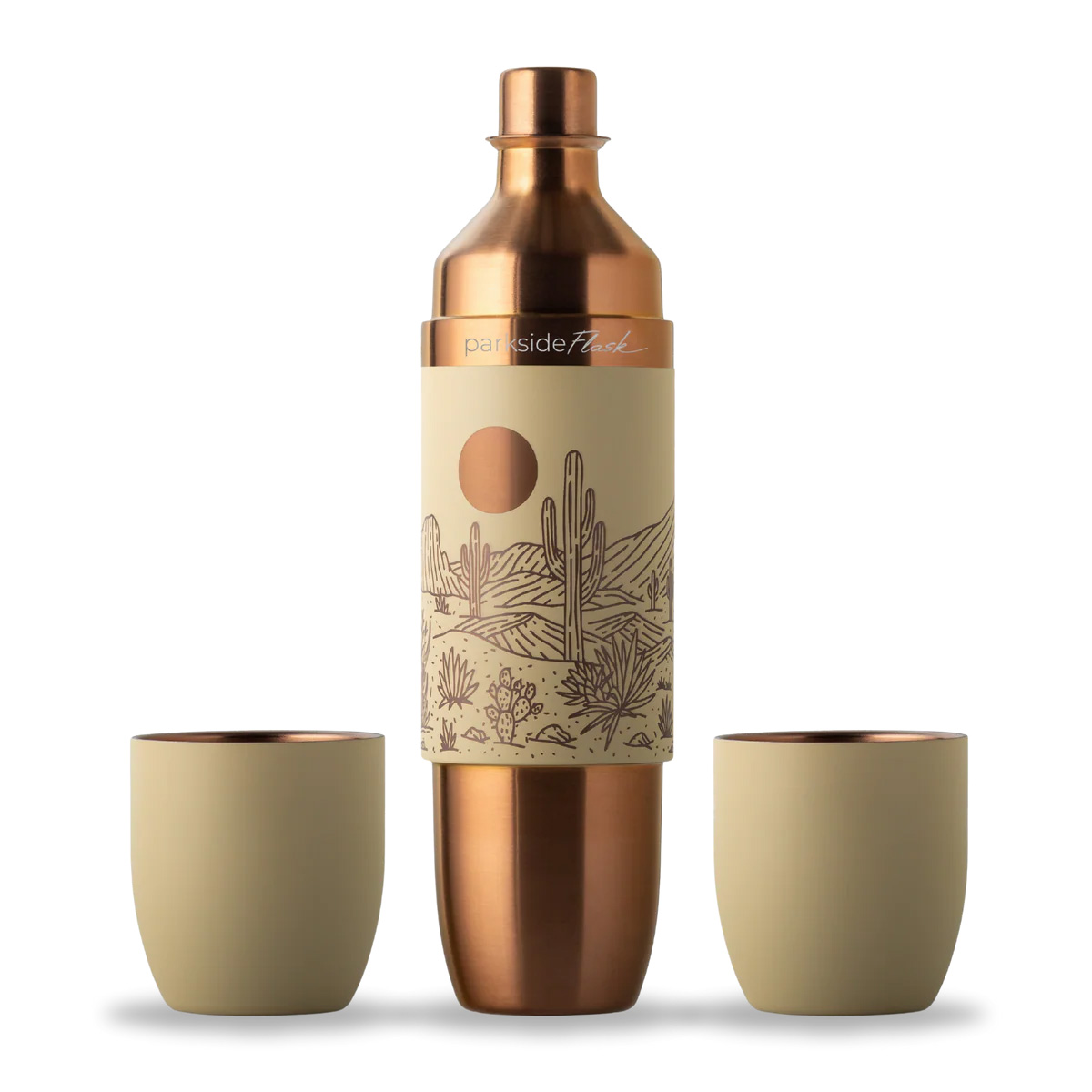
Mikey Rox is an award-winning journalist and LGBT lifestyle expert whose work has published in more than 100 outlets across the world. Connect with him on Instagram @mikeyroxtravels.
a&e features
Drag queen Kennedy Davenport dishes on her new comedy special
The RuPaul’s Drag Race alumni on The Kennedy Davenport Center Honors and how she chooses to stay positive amidst so much hate.

While RuPaul’s Drag Race is filled with legendary queens, few have had as much of a cultural impact as Dallas’ very own Kennedy Davenport. Originally from this seminal program’s seventh season, the performer became an instant fan-favorite with her endless stream of quotable catchphrases and jaw-dropping dance ability. With follow-up appearances on All Stars and Versus The World, Kennedy has solidified herself as one of the biggest icons to come from this franchise. And, finally, World of Wonder is giving her the solo spotlight she deserves with a new special, unlike anything the production company has done before: The Kennedy Davenport Center Honors.
“It’s different, and that’s why I wanted to do it!” Said Davenport, when she sat down with the Los Angeles Blade to discuss what drew her to this new special. “I’m a host by nature — and coming up in the Drag Community, you have to know how to hold a mic.”
The Kennedy Davenport Center Honors will see the queen bestow awards — or, as she calls them, ‘dishonors’ — to various Drag Race alumni. From “Proud Drag Mother Award – When Your Daughter Has A Higher Booking Fee” to “The Struggle is Real Award,” Kennedy was excited to share the stage with some of her favorite Drag sisters and completely gag them with these hilarious new titles. Whether it be recent icon Bosco or long-lasting legends like Alexis Mateo, she assures everyone reading that this VIP list will be one of WowPresentsPlus’ most stacked yet. But beyond the comically star-studded glamour, Kennedy knew that she wanted her first special to be something more than just an award show. She wanted to use this time to uplift and celebrate the Drag community that she loves so much — a practice that queer people have been missing in recent months, but that this Queen does in her life every single day.
“[I’m positive] on a daily basis,” Kennedy explained, when discussing the optimistic attitude she embodies as a host. “I always highlight positivity. And, you know, it’s cliché to say…but I really don’t think about the negative. In my life, or in my career.” It’s a part of the performer that fans don’t often get to see; between the verbal takedowns and stunning lip-syncs, Drag Race watchers can miss how Kennedy is constantly supporting everyone around her.
When discussing how she manages to stay so hopeful, especially when coming from a state filled with anti-LGBTQ+ rhetoric, Kennedy clarified, “It’s a very conscious thing. You have to be aware of what you are putting into the universe, and what you are allowing into your personal space.” She continued, “It’s easy for me to do [this] because I’ve been down at the bottom [of life]. I’ve [also] been at the top, but the bottom is where you really start learning life and start making up your mind about wanting to live positively.”
“I’m going to see my dream, I’m going to see my purpose. I’m going to encourage others and motivate them to be their authentic selves — and I’m going to respect myself along the way so that I can continue to be respected and loved by [everyone around me.]” It’s a radically optimistic mindset that audiences don’t often get to see through the television screen. And it’s one that Kennedy knows her fans can benefit from, now more than ever.
During a time when LGBTQ+ communities — especially drag queens, who are go-to scapegoats for conservative fearmongers — are being attacked at a daunting scale, it’s becoming harder and harder to find moments of pure queer joy in America. It’s understandable that so many are focused on pushing for change in all arenas of this country, but we can’t forget how essential community is in the ongoing fight for liberation. It’s good to remember that in the face of discriminatory rhetoric, LGBTQ+ joy is a radical act, which is why Kennedy is hoping that this special will give viewers something they haven’t had in far too long: a moment to relax.
“It’s all [done] in love, and that’s the message that I really want people to see, that,” said Davenport, when discussing how excited she is to not only poke fun at her fellow performers, but spotlight their many accomplishments. “It’s a ‘dishonors,’ but we all love them, and everybody that I call out [in the special] knows that it’s done in love.” By bringing viewers into her close relationships with everyone involved, Kennedy is inviting them to laugh at the inside jokes she’s developed over years of knowing these stars. It’s the most exciting part of the entire endeavor for the Queen, saying, “I’ve always lived with the heart of love and laughter. So, to have this platform, to be able to spread love…it’s a blessing in disguise.” This interview quickly turned from a spotlight on a funny special into a profile on a Drag Queen who has helped so many over the years. It’s all a part of Kennedy Davenport’s ongoing mission to spread her personal mindset of love and life to everyone she meets, with The Kennedy Davenport Center Honors becoming her latest and biggest attempt at uplifting the many people in her community. This is why, as the interview came to an end, Kennedy clarified her true goal with this special: “At the end of the day, I just want you to be sitting back laughing and saying, ‘That made me sick!’ She talked about me, and I loved it.”
The Kennedy Davenport Center Honors premieres December 7th on WOW Presents Plus
a&e features
Exploring a different side of Los Angeles influencer Javonte Rose
This author, advocate, and model discusses the hard journey that brought him where he is today.

While online followers will think many things when they first lay their eyes on Javonte Rose, there’s one word that will come to many of their minds: perfection.
This LA-based model and musician has spent the last few years occupying people’s timelines with a perfectly curated social media presence. It’s what led to his casting on hit queer web series like WowPresentsPlus’ Vanjie: 24 Hours of Love, where fans came to know him for his effortlessly suave confidence. Javonte’s brand is built on this form of pure queer excellence — but it definitely didn’t start that way. Because, despite what it may seem to his thousands of Instagram followers, Javonte’s life story is one of hardship and tireless work, facing some of the worst situations imaginable and refusing to let them break you. It’s an aspect of the influencer that your average follower wouldn’t get to learn about, and it’s an experience that he hopes to share with the many people going through the same turmoil he did today.
Initially, Javonte sat down with the Blade to discuss his part in OUTtv’s recent reality series Slayers: Wheel of Fate. Hosted by the legendary Tiffany ‘New York’ Pollard, Javonte was thrilled to be a part of this all-queer competition show. “I had an amazing time,” he gushed. “And just being in a house with so many different individuals who you don’t know and coming together…it brought me back to childhood. [I got] to be very smart and strategic — playing it cute and playing it safe!” He laughed about the intensity of this program, yet what began as a fun conversation about reality TV quickly became an insightful discussion about healing from trauma, all because of one question: what made you who you are today?
Of course, every influencer has a past, one that reveals a deeper side to the flawless image projected to their online audiences. But few backstories are as shocking as Javonte Rose’s, with the man starting his explanation with a distressing statement: “I’ve been on my own since I was 15 years old.”
“Growing up was such a struggle for me,” he continued. “[My siblings and I] were split up as kids, because my mom was going through a lot…she had her first kid at 13, and so she was trying to be a mom and a teenager at the same time. So we were all split up, and I moved in with my aunt — it was a big difference.” Javonte’s eyes literally lit up when speaking about his aunt; for the first time in his life, it felt like he actually had a parent. “My aunt was the one who taught me how to love and respect and appreciate people…she treated me with love and respect, and loyalty and guidance, and the motherhood my mom didn’t have [any of].” While he spent a relatively short time with the woman, Javonte emphasized how dearly he loves his aunt and the sense of family that she instilled in him. He’d finally received the love he hadn’t had from his birth mom, which is why it was particularly devastating when, after only a few years with his aunt, his mother regained custody of her children.
Returning to his immediate family set off a decade of torment for Javonte. “I was being bullied by kids in school, then going back home [and] being bullied by my siblings and verbally [abused] by my mom and her boyfriend.” This experience went on well into his teens, forcing him to start working at only 12 years old while enduring homophobic harassment at home and in school. These years of abuse culminated in the horrific experience of his mom calling the police on him when he was only 15 years old.
“Your mother putting you in jail for something you didn’t do is [heartbreaking],” said Javonte, detailing the day when, after attacking him physically when he tried to leave their home to go to work, his mother called the police and alleged that he was the one attacking her. “Feeling those handcuffs…knowing she’s behind you watching it happen…” The artist described the feeling of having the person meant to protect you turn into the source of your worst trauma. It was a terrifying moment that led to his younger self moving to Boston, where he began the modeling career that brought him to where most people know him today.
“People always [see me as] this beautiful man. ‘Wow, he does modeling, acting, he’s on television…how can he go through such struggles and trauma?” It’s a misconception that Javonte has always experienced, but it’s luckily given him a platform that he uses to hopefully make sure nobody goes through the same experience he did.
While many people know Javonte for his reality TV appearances and catchy songs, the man has also spent years as one of Los Angeles’ most fashionable activists. Not only has he documented his tumultuous childhood in a memoir, Behind the Blue Eyes, but in 2016, he started his own anti-bullying nonprofit, I’m Here. He was able to turn a lifetime of tragedy into a mission to support others with a ceaseless confidence that he credits to one person: his aunt. “I always stood my ground because my aunt always told me to keep my head high and smile no matter what. I just kept looking at myself in the mirror and [telling myself], ‘You are amazing, you are beautiful, you are strong, you are powerful.’”
Javonte’s story shows how even just one supportive person can impact someone’s entire life. And, through the man’s ability to turn so much early anguish into the easy image of perfection he has now, it also speaks to the importance of valuing yourself even when everyone around you tries to make you feel lesser. Because Javonte wouldn’t have accomplished any of his wildly impressive resume without believing that he had a story to tell. And, as he ended the interview, the advocate advised his many fans, “Find a safe place…and write. Write the things that you’re going through, things that you want to change, and things that you want to see in your life. Try to think of the beautiful life moments [you’ve had], and try to think of the beautiful life moments that [you will] have. And just try to keep uplifting yourself through it all.”
a&e features
Jonathan Bennett: making ‘Finding Mr. Christmas’ Season 2 with heart, and telling gay love stories for broad audiences
The Mean Girls star dishes on looking for the next Broadway role and how Hallmark has supported queer storytelling
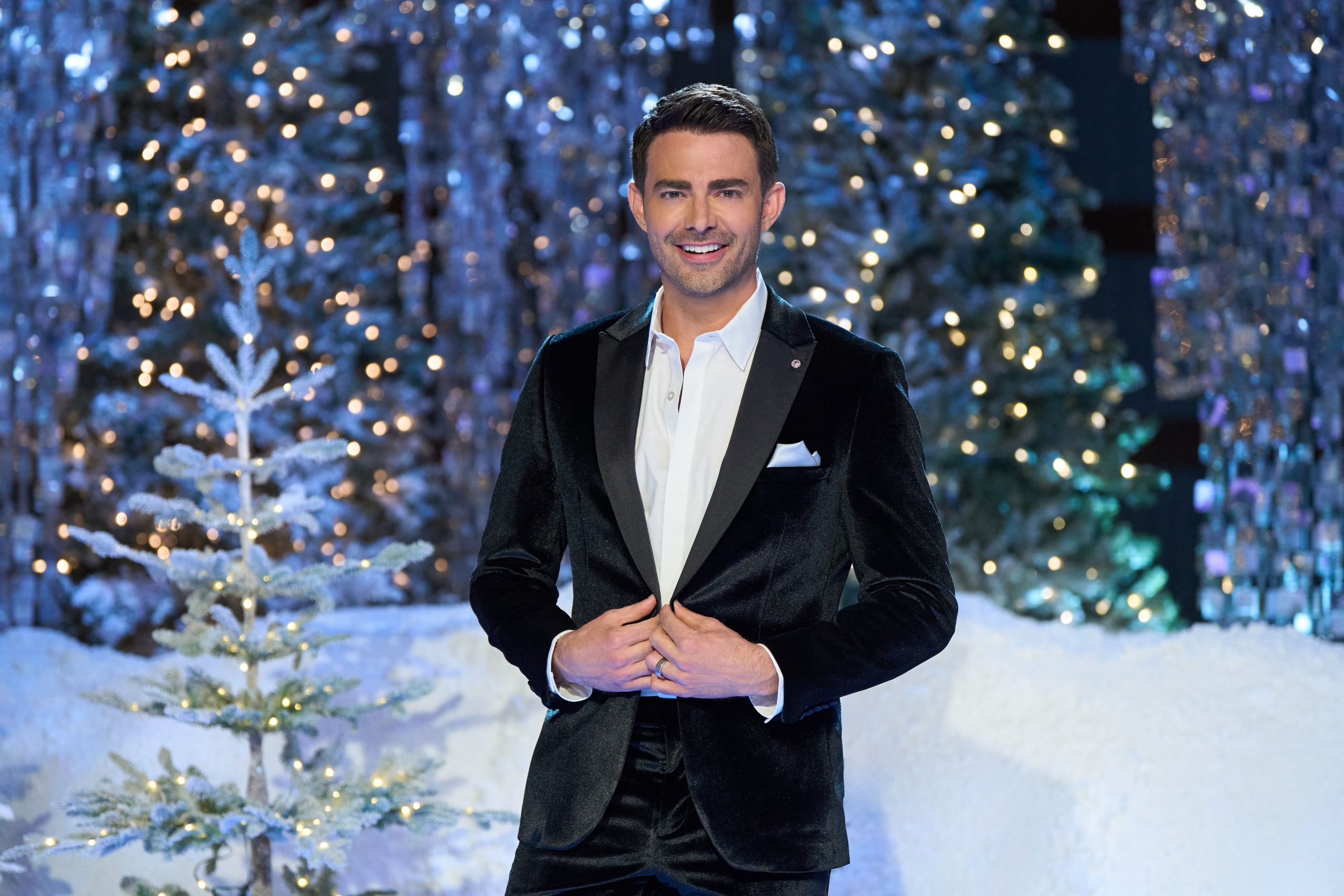
Jonathan Bennett believes there are two kinds of people in the world — those who love Hallmark movies and liars. And in Season 2 of Finding Mr. Christmas, which the Mean Girls star co-created with Ben Roy, Bennett is searching for Hallmark’s next leading man.
“It’s so fun for people because everyone in their life has someone they know that they think should be in Hallmark movies, right? The UPS driver, the barista at the coffee shop, the dentist,” Bennett says. “So we’re testing their acting abilities, we’re testing who they are, but we’re also looking for that star quality — the thing that makes them shine above everyone else. It’s almost something you can’t explain, but we know it when we see it.”
Season 2’s cast includes a former NFL player for the Green Bay Packers, a few actors, and a realtor. The 10 men compete in weekly festive-themed acting challenges, one of which included having to ride a horse and act out a scene with Alison Sweeney. The contestants were chosen from a crop of 360 potential men, and Bennett gives kudos to the show’s Emmy-nominated casting director, Lindsay Liles (The Bachelor, Bachelor in Paradise).
“She has a tough job because she has to find 10 guys that are going to be good reality television, but also have the talent to act, carry a scene, and lead a Hallmark movie eventually,” he says. To be the right fit for a Hallmark leading man, Bennett singles out five key characteristics: you have to be funny, charming, kind, have a sense of humor, and you have to do it all with a big heart.
Of course, Finding Mr. Christmas wouldn’t be Finding Mr. Christmas without its signature eye candy — something Bennett describes as “part of the job” for the contestants. “I can’t believe Hallmark let me get away with this. I dressed them as sexy reindeer and put them in harnesses attached to a cable 30 feet in the air, and they had to do a sexy reindeer photo shoot challenge,” he says with a laugh. “This season is just bigger and bolder than last. People are responding to not only all the craziness that we put them through, but also comparing and contrasting the guys in their acting scenes when we do them back-to-back.”
Season 1 winner Ezra Moreland’s career has been an early testament to the show’s success at finding rising talent. On seeing the show’s first winner flourish, Bennett says, “Now to watch him out in the world, just booking commercial after commercial and shining as an actor and a model, I think the show gave him the wings to do that. He learned so much about himself, and he took all that into his future auditions and casting. He just works nonstop. I’ve never seen an actor book more commercials and modeling gigs in my life.”
Bennett has been a star of plenty of Hallmark movies himself, including the GLAAD-award-winning The Groomsmen: Second Chances, which makes him a fitting host. Among those movies are 2020’s Christmas House, which featured the first same-sex kiss on the network and had a major impact on Bennett’s career as an openly gay man. “Hallmark’s been so great about supporting me in queer storytelling. But again, I don’t make gay movies for gay audiences. I make gay love stories for a broad audience, and that’s a huge difference, right? We’re not telling stories inside baseball that only the gay community will understand.”
He continues, “The backdrop of a Hallmark Christmas movie is very familiar to these people who watch. And so when you tell a gay love story, and you tell it no differently than a straight love story in that space, they’re able to understand. It’s able to change hearts and minds for people who might not have it in their lives.”
While Hallmark has become a major staple of Bennett’s career, he started off wanting to be a Broadway actor. And before the first season of Finding Mr. Christmas aired, Bennett took a break from TV to make his Broadway debut in Spamalot, replacing Michael Urie as Sir Robin and starring alongside Ethan Slater and Alex Brightman.
“That was my dream since I was five years old – then I booked a movie called Mean Girls, and everything kind of changes in your life. You no longer become a person pursuing Broadway, you become a part of pop culture,” Bennett recalls. “And to be honest, when I hit 40, I was like, ‘I’m probably never going to get to live that dream.’ And that’s okay, because I got to do other dreams and other things that were just as cool but different. So I honestly never thought it would happen.”
Bennett is still determined to make his way back on Broadway with the right role — he calls Spamalot the “best experience” of his life, after all — but he’s got another Hallmark show lined up with Murder Mystery House, which he co-created. The show was recently greenlit for development and intends to bring the Hallmark mystery movie to life. “It’s kind of like our version of The Traitors,” Bennett admits.
Looking back on both seasons, Bennett says that what makes Finding Mr. Christmas stand out in the overcrowded reality TV landscape is that everyone involved makes it with heart: “This isn’t a show where you’re going to watch people throw drinks in each other’s faces and get into big fights. The thing that has amazed me so much about this show, the more we’ve done it, is that every season, 10 guys come in as competitors, but they leave as a family and as brothers. That’s something you don’t get on any other network.”
Finding Mr. Christmas airs every Monday on Hallmark through December 20, with episodes available to stream on Hallmark+.
a&e features
Nia DaCosta and Tessa Thompson on the vital queer chaos of ‘Hedda’
The director and star of the sapphic thriller offer a new vision for what LGBTQ+ representation can be
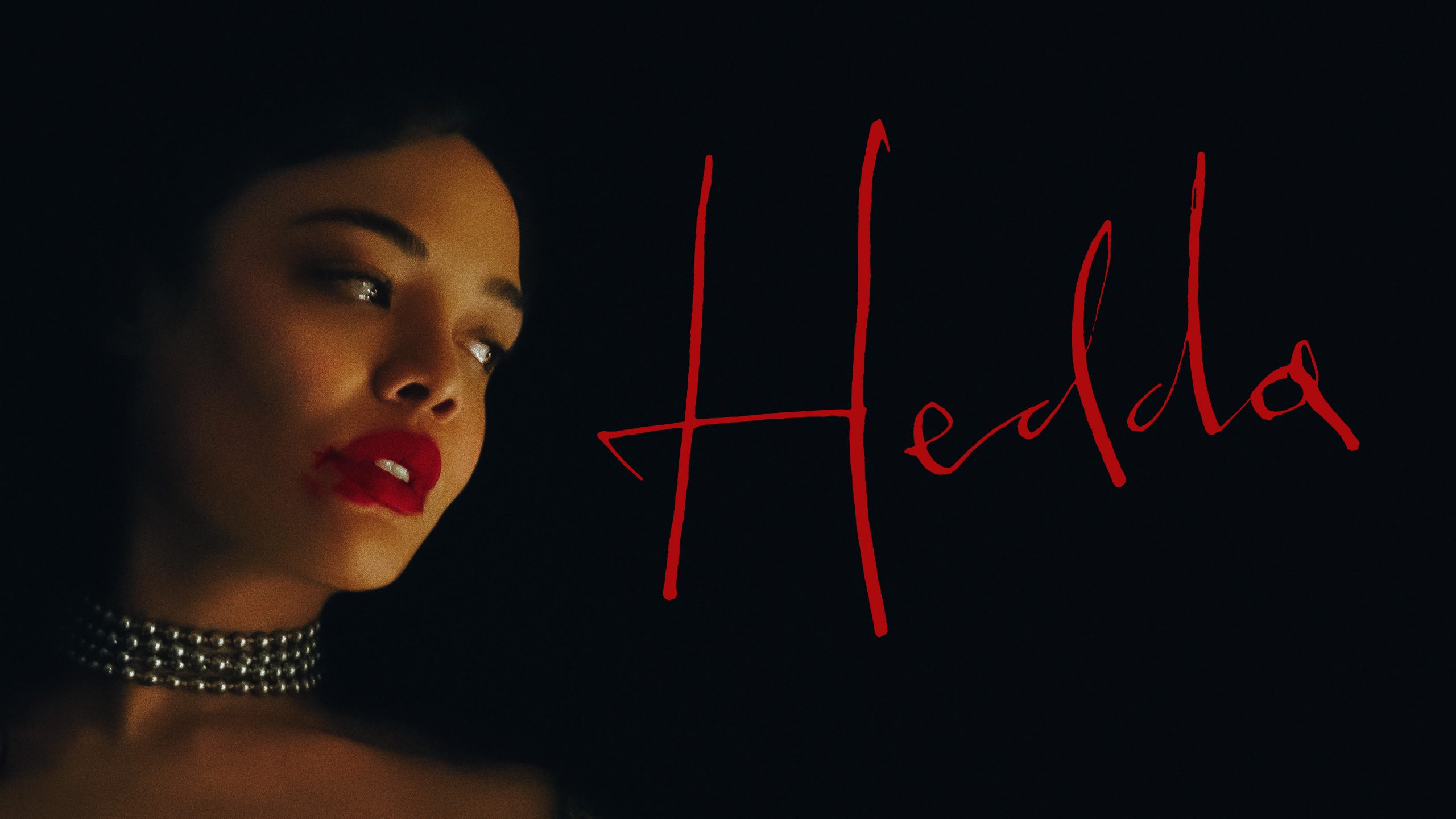
No matter how much hateful rhetoric tries to silence LGBTQ+ communities, queer people will always fight tirelessly to ensure our stories are told. This is shown prominently in film and television; modern viewers are lucky to have an ample library of queer media to choose from. That’s not to say there haven’t been serious losses in this area, with organizations like GLAAD documenting how the rise in hateful rhetoric has exacerbated existing attempts to ban these important pieces of media. But whether it be in the cinema or online, marginalized creators continue pushing to have their projects be created today — and absolutely none of these creations are as deliciously diabolical as Hedda.
An adaptation of Henrik Ibsen’s classic play, this story follows the titular housewife as she deftly manipulates anyone unfortunate enough to get caught in her orbit. Taking place over the course of a raucous house party, the 2025 version of this 1891 tale sees our ‘protagonist’ square off against 1800s gender norms, her inept husband, and the sudden re-emergence of her ex-girlfriend. Along with its jaw-dropping story of betrayal and intrigue, this complex adaptation seamlessly weaves various identities into a narrative that has been celebrated for more than 100 years. It effortlessly intertwines these historic themes with aspects of queerness and racism that audiences will know well, not only creating the best Hedda adaptation yet, but innovating what LGBTQ+ representation can look like today.
As someone renowned for injecting legendary franchises with much-needed nuance, Nia DaCosta knew how important it was to bring representation to Hedda — despite many people advising her against it. “[Speaking] as a Black woman, when you are not a white dude, your identity becomes a ‘complication,’” said the director, when discussing with the Blade what pushed her to translate this typically white, heterosexual character into a queer woman of color. “Something I get asked a lot is, ‘Oh, well Hedda is Black and queer — don’t you feel like that’s stacking too much on top of the film?’ And I respond, ‘Who you are is not too much.’”
It’s a sentiment that the film’s star, Tessa Thompson, completely resonated with. She shared with the Blade, “I think there is something so powerful about queerness [becoming] textural inside of a narrative,” raved the star, whose filmography is filled with projects like Dear White People and Passing that interrogate what true representation looks like in modern society. “Where we get to sort of normalize that and say this is a huge part of our identity, but it isn’t everything about us,” she continued. “Frankly, I wish that more filmmakers thought about that when they’re conceiving characters.”
It’s a conversation that has gone on for years among queer cinephiles: what is representation by and for LGBTQ+ audiences, and what is teaching non-queer viewers that gay people are also human beings? While it is (unfortunately) still essential for movies to perform this kind of education, it’s led to many projects offering a digestible image of queerness that doesn’t actually reflect the experiences of queer people watching. This kind of portrayal has led to studios utilizing diverse identities as gimmicks, ‘complications’ in the narrative that must be maneuvered around rather than vital aspects of nuanced characters. It’s a harmful trend of hollow representation, and it’s one that Hedda combats in every single scene.
“[Hedda is] canonical material that’s been celebrated for centuries,” Thompson explained. “Obviously, that wasn’t from a queer perspective, wasn’t from the perspective of folks of color…and I think, in a way, what we’re trying to say is that our stories also should be canonical.” By using a story that has existed for so long and effortlessly imbuing themes of queerness and racism into it, this creative team showcased how identity doesn’t have to simply be a narrative ‘hook.’ Rather, by recognizing that these significant identities contribute to the larger personality of a character, it adds impressive complexity to make the story even more entertaining to watch. Thompson’s character is a devilish (if not outright evil) anti-hero who champions her intersectional identities while not performatively explaining to audiences the anguish of being a queer Black woman in the 1800s. This allows her many intricacies to truly shine, with the film refusing to reduce Hedda to the discriminations these identities could solicit and instead using them to further flesh out an already intoxicating character.
Nia DaCosta is an expert at weaving diverse identities into stories not specifically focused on those identities (often to the outcry of conservative audiences). “You can’t think of identity as a complication,” she said, detailing how, whether it was Hedda or her foray into superhero cinema with The Marvels, she’s been alarmed at how reluctant so many filmmakers are to center marginalized identities in stories that aren’t about marginalized pain. “Don’t let anyone else tell you that it’s a complication or that it’s gonna make it too confusing or too complex. It’s not true, because we’re all valid, and we all deserve to be at the center of a story.”
By showing not only how easily such a classic tale can be revised with diverse themes but also how greatly improved it can be by them, DaCosta highlights how easily true representation can be accomplished today. Representation that doesn’t tokenize queer individuals or refuse to allow them outside of stories focused on the pains of being queer. Through her ideation and Thompson’s acting, she innovates cinema by offering a truly multi-dimensional portrayal of a queer person of color whose identity isn’t a complication or narrative tactic. And, when asked what she hopes for intersectional stories like this going forward, the Director ended the interview by saying plainly, “I want to see more of them.”
“There’s room for us in every kind of genre, every kind of storytelling. And we’re slowly cranking in that direction, but I think it’s a fight we have to keep having, and we have to keep being forceful about it, and we have to keep showing up in these spaces and planting our feet. That’s what I hope to see more people [doing]…coming in and planting their feet.”
a&e features
Jason Caceres is the rising talent you can’t look away from – not that you’d want to
With three OUTtv series, festival awards, and charismatic energy, Caceres is becoming one of queer media’s most versatile characters
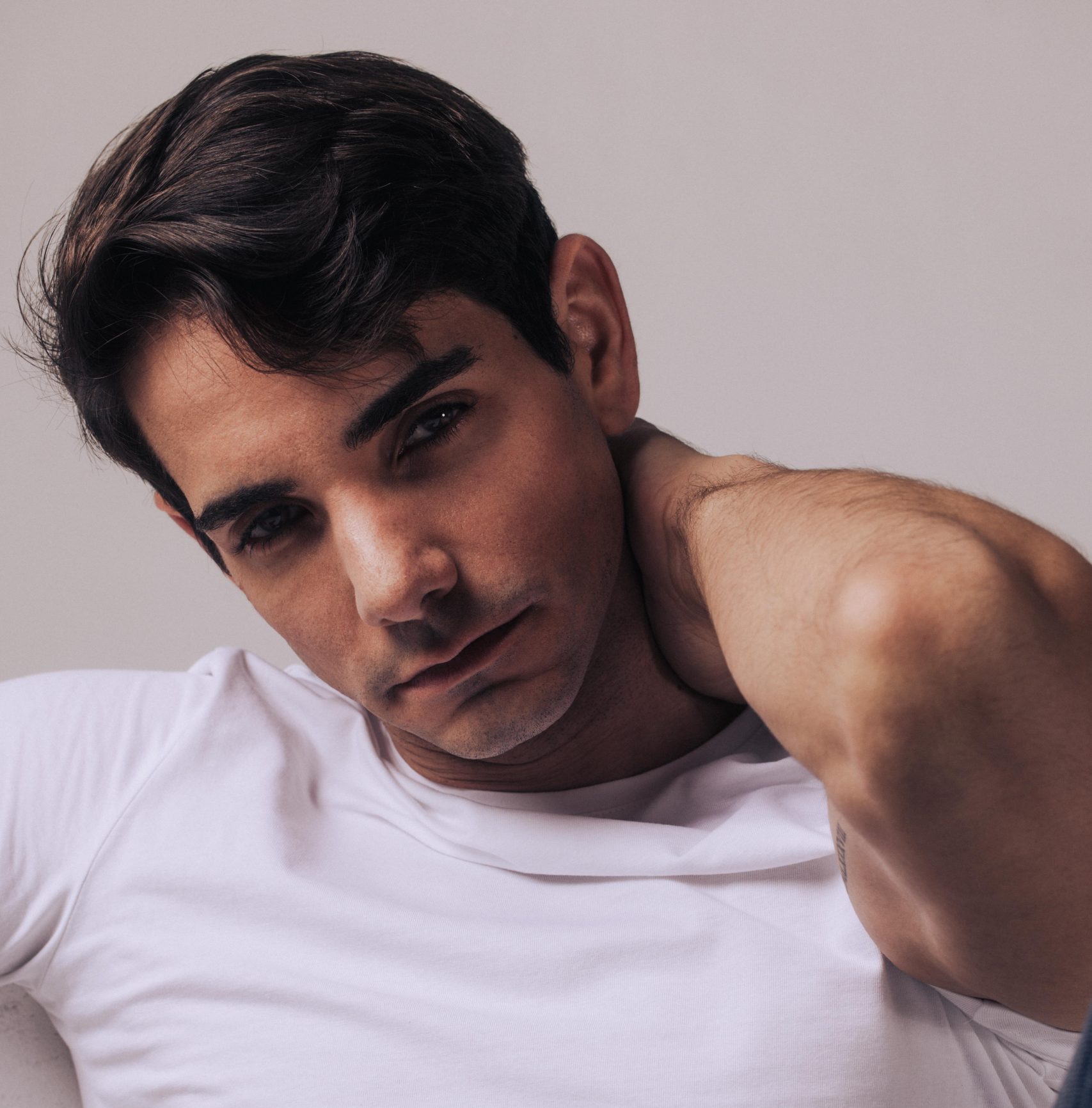
For actor Jason Caceres, the past few years have marked an intentional rise – one defined by a commitment to queer storytelling, a love of comedy, and a layered understanding of what representation in media means. With roles across multiple OUTtv series, including Boy Culture: Generation X, Open To It, and the upcoming Laid Bare, Caceres has become one of the network’s most recognizable and versatile emerging voices. He’s the kind of actor who can get a laugh with nothing more than an eye-roll, a perfectly timed one-liner, or a hair color choice that probably deserves its own content advisory.
Born and raised in Miami to Cuban immigrant parents, Caceres grew up straddling two cultural worlds. This duality informs the emotional sensitivity he brings to his characters. “At home, I spoke Spanish, watched Telenovelas, ate croquettas and bocaditos,” he explains. “At school, I spoke English and ate mashed potatoes and mac and cheese. It helped broaden my horizons…”
To have grown up at this intersection, he says, is precisely what allows him to tap into a range of emotional registers on screen. “It’s given me a sense of empathy that I’m not sure I would’ve had otherwise.” That empathy is evident across his work, whether he’s leaning into camp absurdity or finding solitude in the quieter, more vulnerable scenes.
Caceres’s visibility extends well beyond television. He’s quickly becoming a fixture on the festival circuit, most notably at Cinema Diverse, the Palm Springs LGBTQ+ Film Festival, where he appeared in five programs this past year – an impressive feat even for longtime regulars. “As an openly queer artist, it’s always heartwarming to be received so well by my own community,” he tells the Blade. His long-standing relationship with the festival reflects not only local enthusiasm but also the deep resonance of his work with queer audiences seeking media that affirms their personal experiences and stories.
Still, it’s his turn as Princeton Martinez on Open To It that has captured the widest attention. Caceres’s portrayal is sassy and chaotic, yet he still manages to pull the character into unexpectedly vulnerable territory – a balance he intentionally cultivated when returning for Season 2. “Princeton has seen a lot of growth since the first season,” he says. “Season 2 sees Princeton struggle to grow into himself. We see heartbreak, we see insecurity, we see doubt, and we see love.”
One of the season’s most striking moments mirrored a moment from Caceres’s own life. “[Princeton’s] letting his guard down and, for the first time probably in his entire life, admits that he wants someone to love him the way Greg and Cam love each other,” Caceres recalls. The emotional truth of the scene surprised even him. “It struck me in a way I was not expecting … Right as Frank yelled ‘cut!’ I started bawling like crazy. It was definitely an ‘art imitates life’ moment for me.”
Yet the versatility of Caceres is what truly defines both him and his growing career. As he tells the Blade, “At the end of the day, [Open To It] is a sex comedy that is meant to make you giggle.” He talks about the show with a mix of humor and self-awareness, fully conscious of the role he plays and the space the series occupies in queer culture. At the same time, he remains humble and genuinely grateful for his opportunities. He is quick to credit the queer creators who shaped his own awakening, including Boy Culture and director Allan Brocka. Now, with three OUTtv series to his name and Laid Bare, a queer Agatha Christie-style murder mystery, on the horizon, Caceres has become part of that creative lineage himself. “When I moved to Los Angeles to pursue acting, I knew I wanted to lend my voice to the LGBTQ+ community,” he says. “I was starving for stories and characters that were like me.”
What unites his varied roles is a throughline of joy – a willingness to portray queer characters as messy, hilarious, emotional, desired, and flawed. Caceres is bold, sexy, eclectic, and entirely his own. He is a rising talent whose presence signals exactly where queer storytelling is headed next.
a&e features
‘Suffs’ star Gwynne Wood wants us to continue to find hope
What a musical about the suffragette movement can teach us about fighting for LGBTQ Rights
Saying there’s a lot of anxiety in the queer community right now is an understatement. With the overwhelming shadow of politicians threatening to take away our rights, it is now more important than ever to try to find hope and not let fear control us. That’s what Suffs the musical aims to teach us how to do.
Gwynne Wood, who plays Lucy Burns, the co-founder of the National Women’s Party, sat down with the Blade to share what she’s learned from being in the musical.
“Lucy never conforms to what other people want her to be. She has this sense of humor that she uses to bring the group together, even in times of intense hardship. I think that playing her, like I would like to be, like that. I always want to bring humor and heart to these times that we’re living in.”
The suffragettes went through an instrumental amount of tribulation to get the right to vote, including going on a hunger strike and being called insane. Yet, they were still able to remain unwavering in their mission to get the 19th Amendment passed.
Even though there has been progress made since then, in many ways, we’re still fighting for our basic rights to be respected. Many states are trying to prevent LGBTQ people from being visible in classrooms through implementing book bans or just outright telling teachers they’ll be fired if they bring up LGBTQ people.
Even though the Supreme Court decided that it was not going to take up the Kim Davis case, which would have upended gay marriage, it felt disheartening to many that it was even a debate in the first place.
However, if there is one thing that Suffragettes can teach us, it is that we have the right to push back against these policies.
“As much as this administration wants to squash what feels like any sense of hope that we have. It’s our right to dissent. Things have been terrible before, but they pushed through. Our ancestors have done so much for us, and it’s our duty to them to fight back. “
Gwynne also felt the uncertainty around the Kim Davis case, as they recently got engaged. Despite that unease, they believe it’s essential to remember that fear should not prevent people from living their lives.
“We weren’t sure what was going to happen, but I think that I want people to know that even as we were getting inundated with scary things coming from our government, it shouldn’t stop us from living our lives to the fullest, and I think that Suffs has helped me to fully embrace that.”
The women of the suffragette movement are a perfect example of not letting fear get in the way of controlling our lives. One way that the real-life Lucy Burns and Alice Paul did this was by creating a sense of found family through living together, in addition to creating a safe space for women to come together to fight against oppression.
One way that the cast has come together to create that sense of camaraderie is through dressing up as different Scooby-Doo characters for Halloween.
“The dynamic between all of us as actors is so special. It honestly makes it easy to have chemistry with the folks I’m with every night because the show is about the relationships between these women. It makes it a lot easier and so much fun.”
Suffs runs at the Hollywood Pantages Theatre from November 18th to December 7th.
